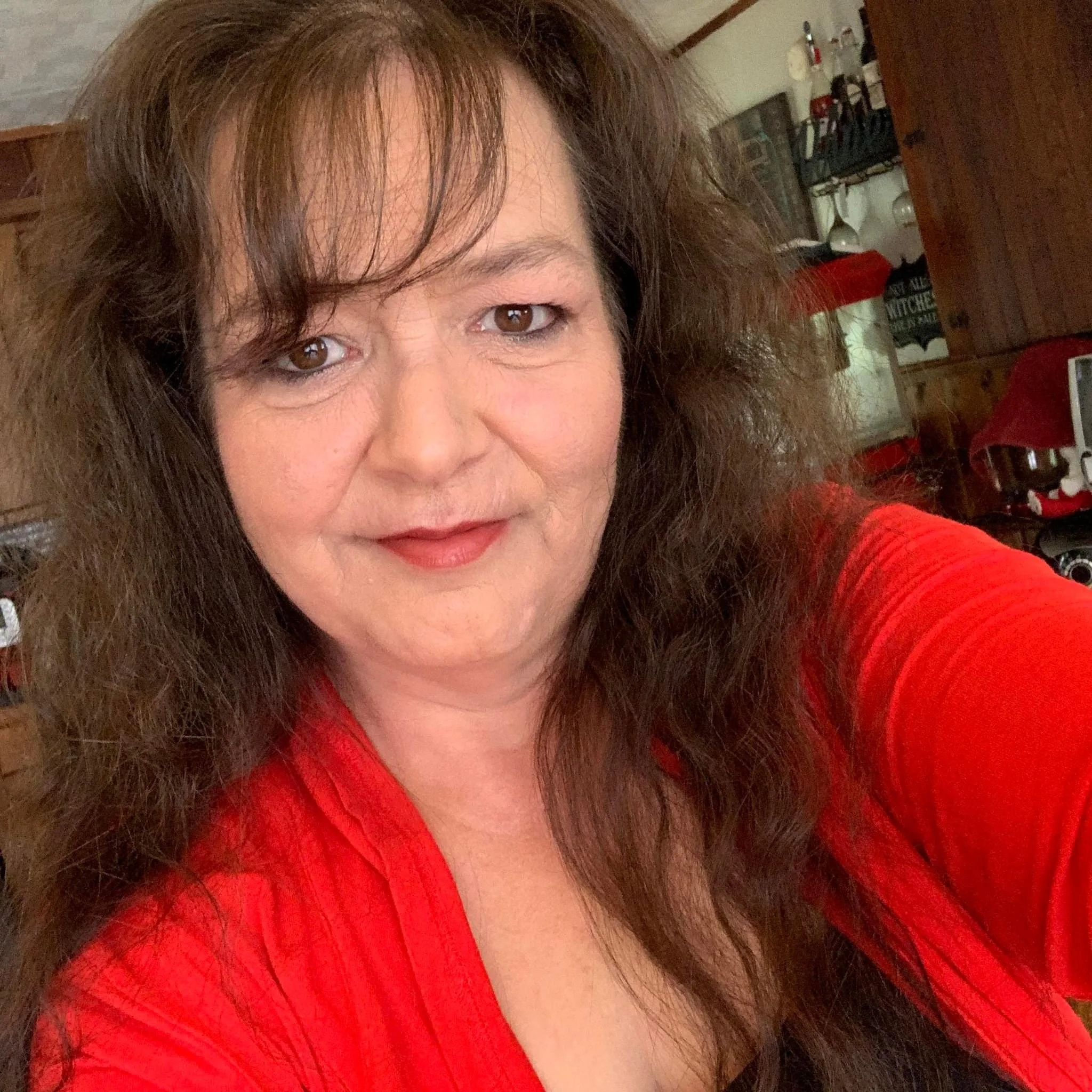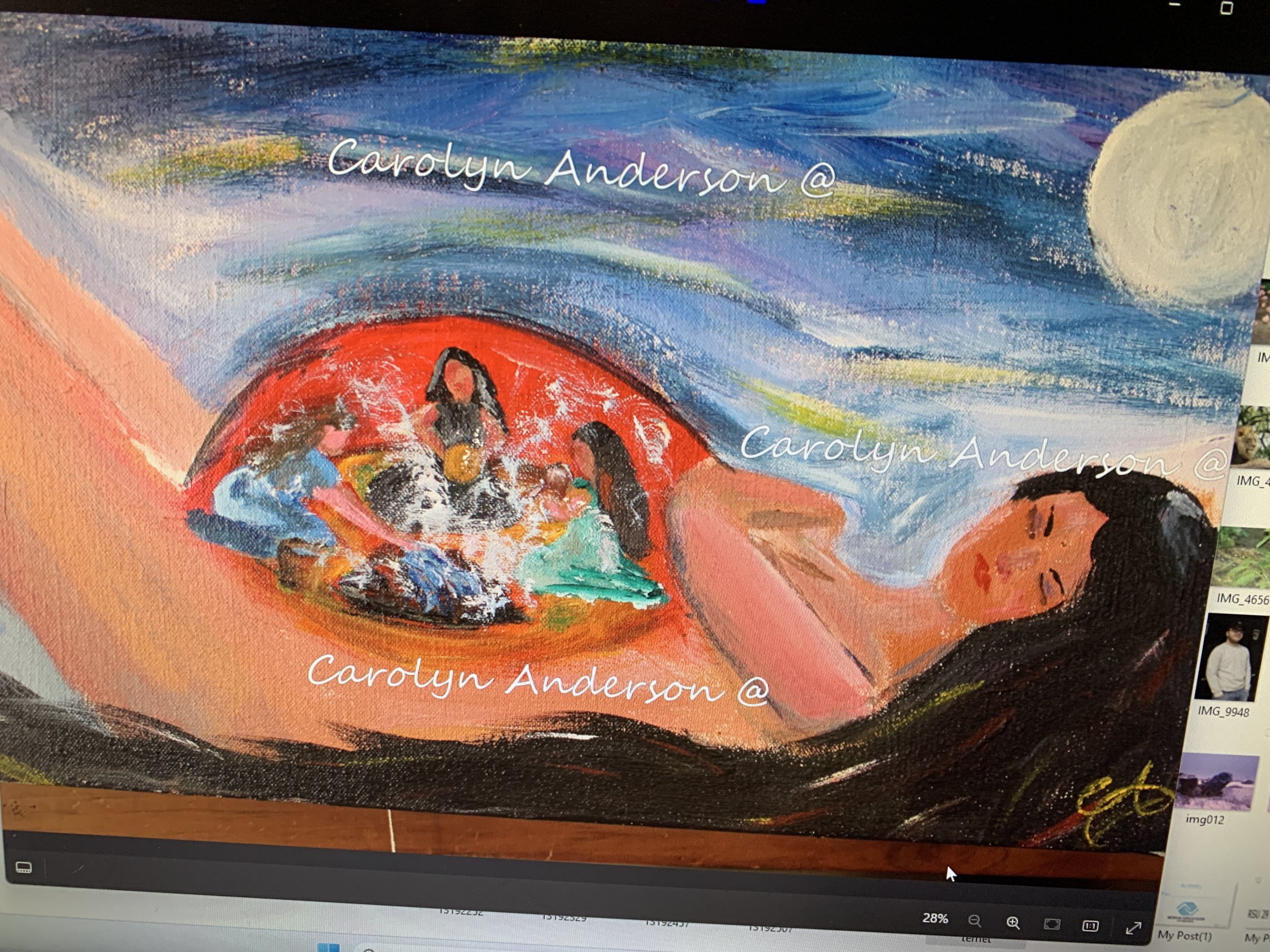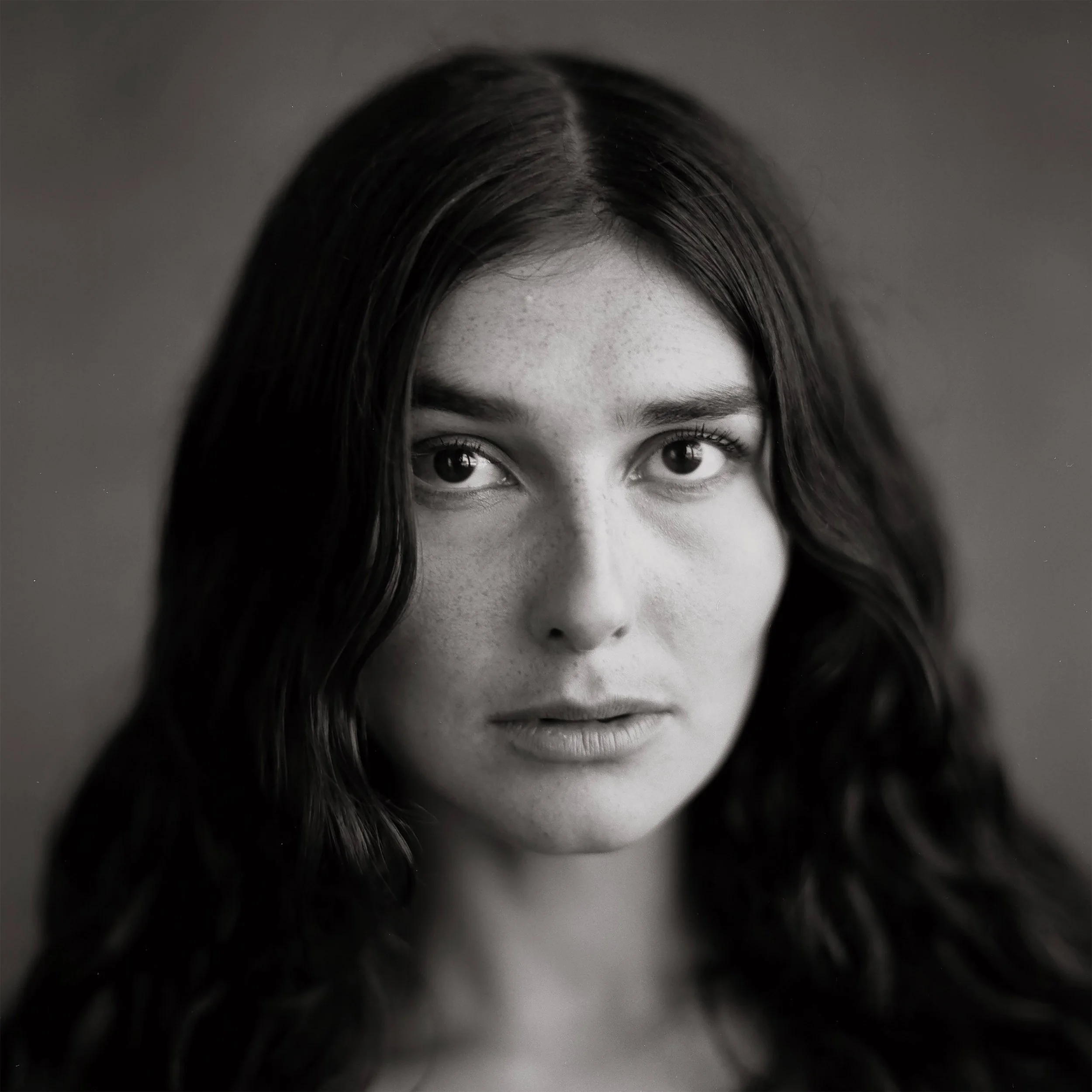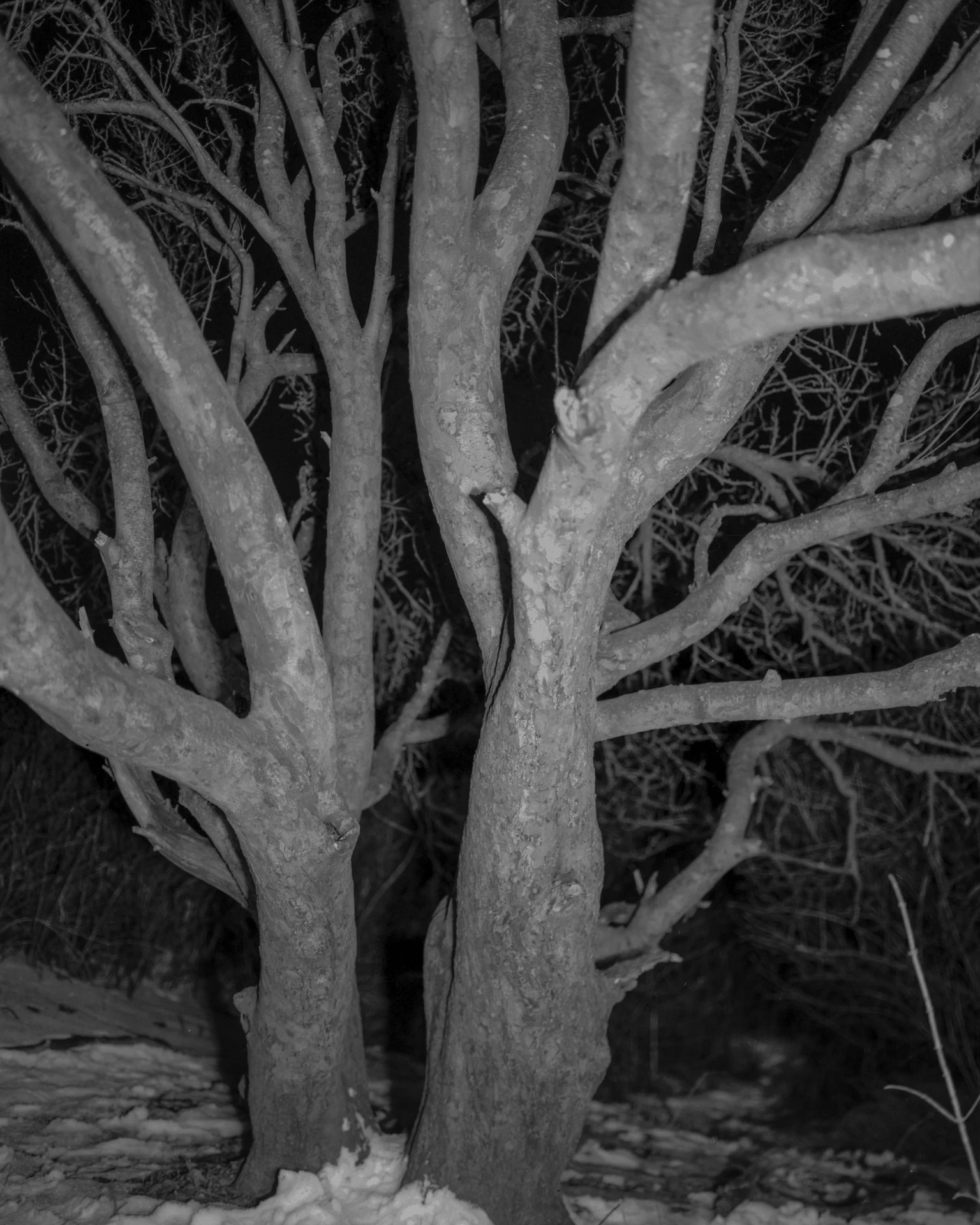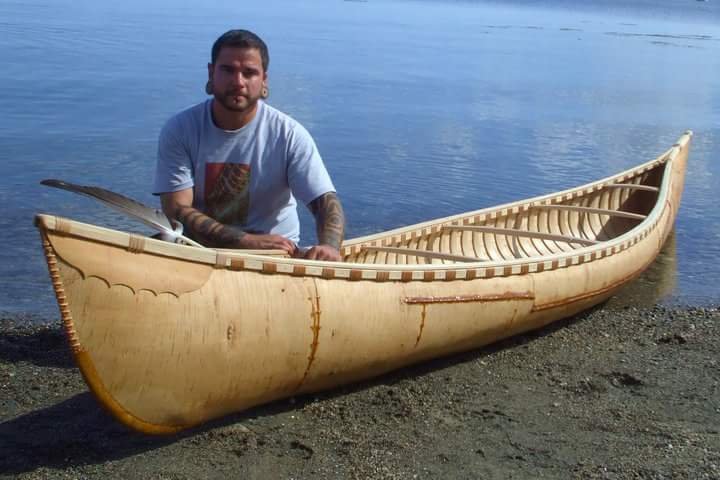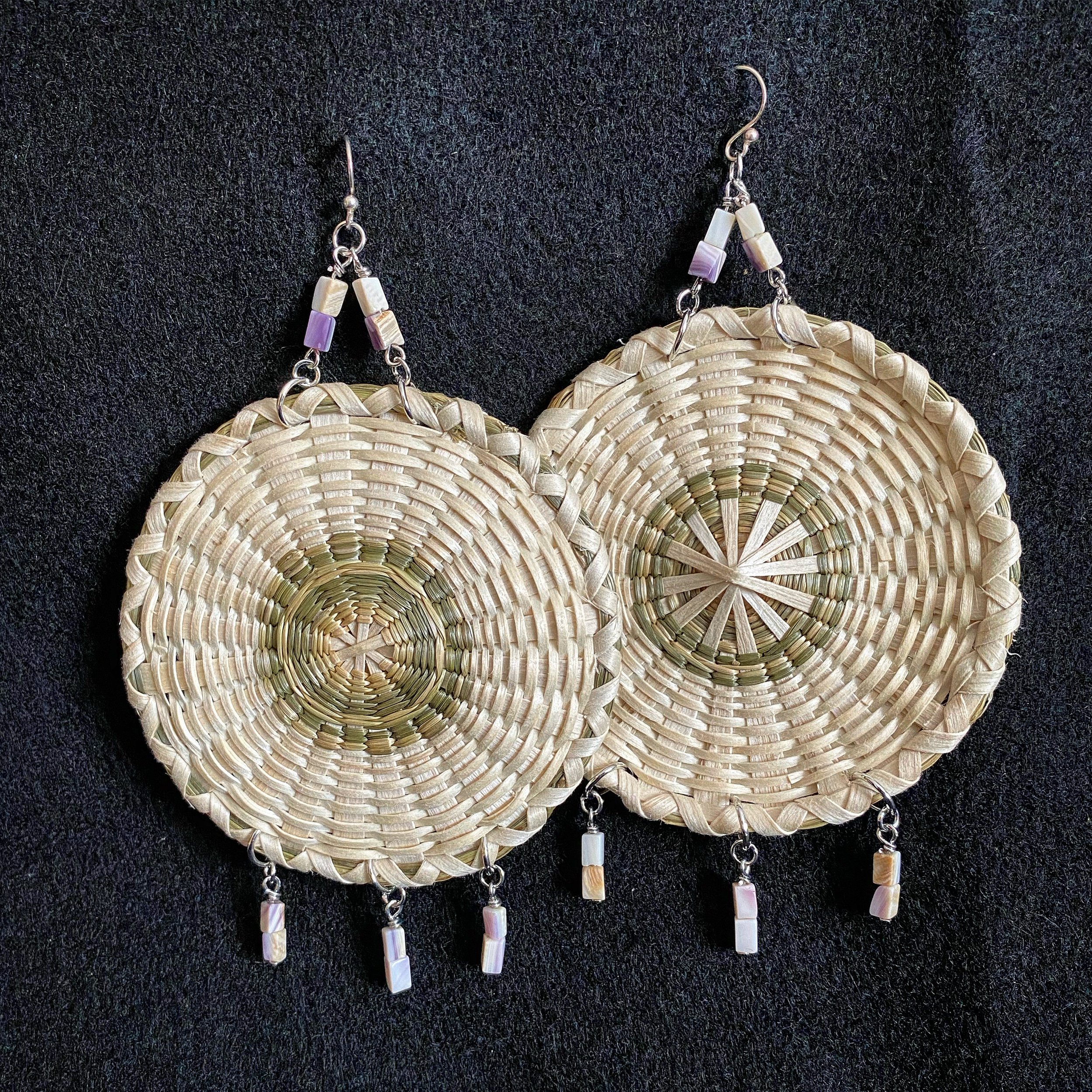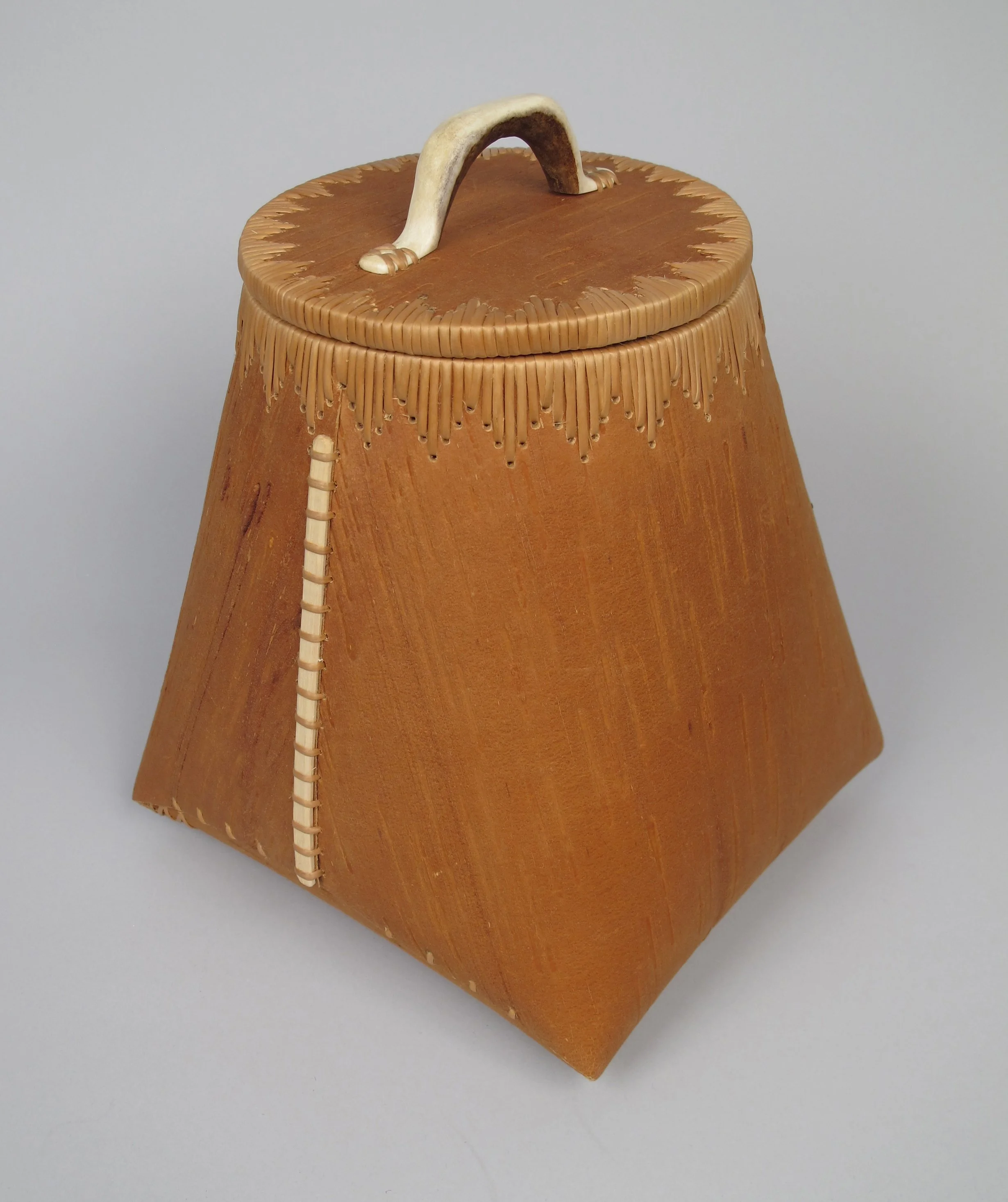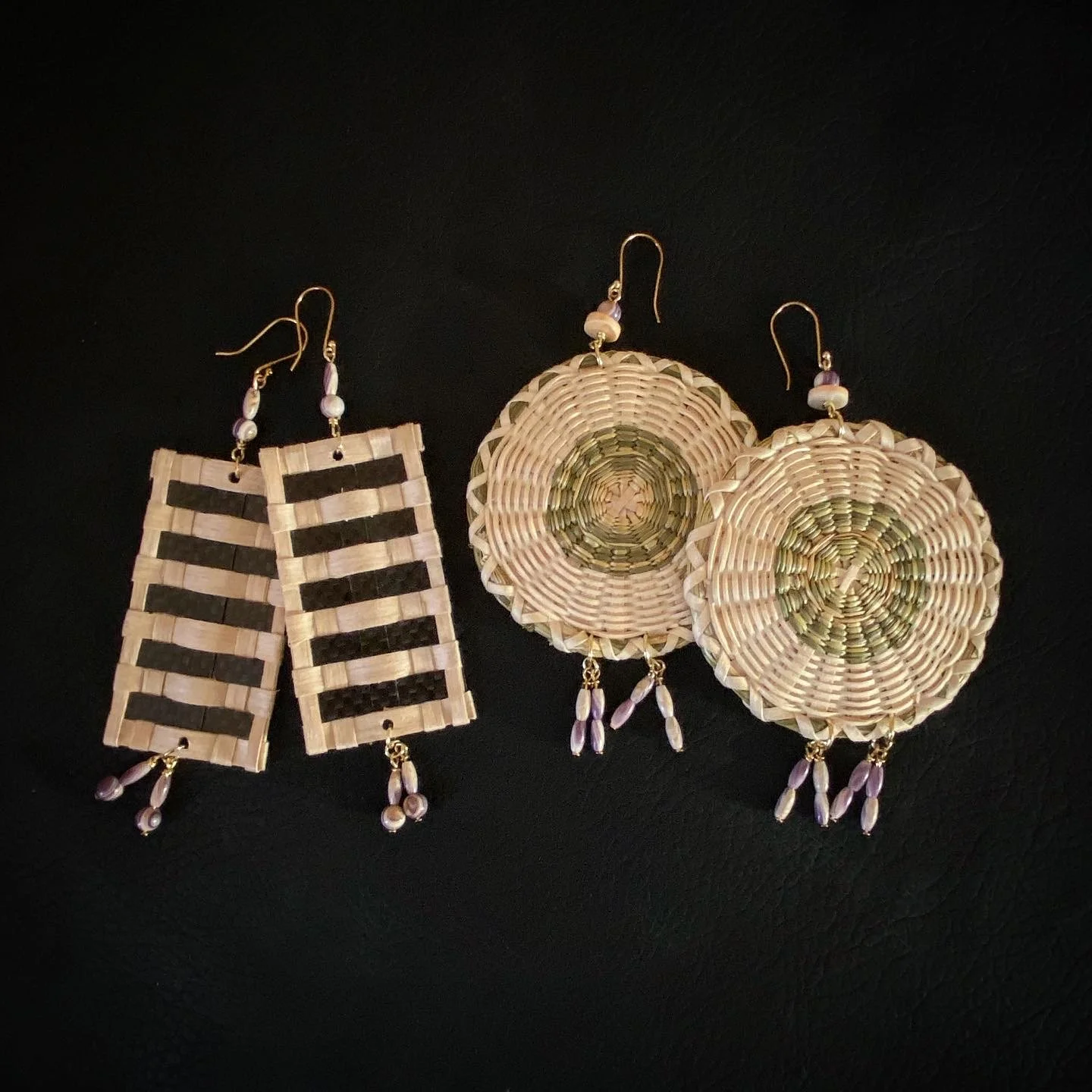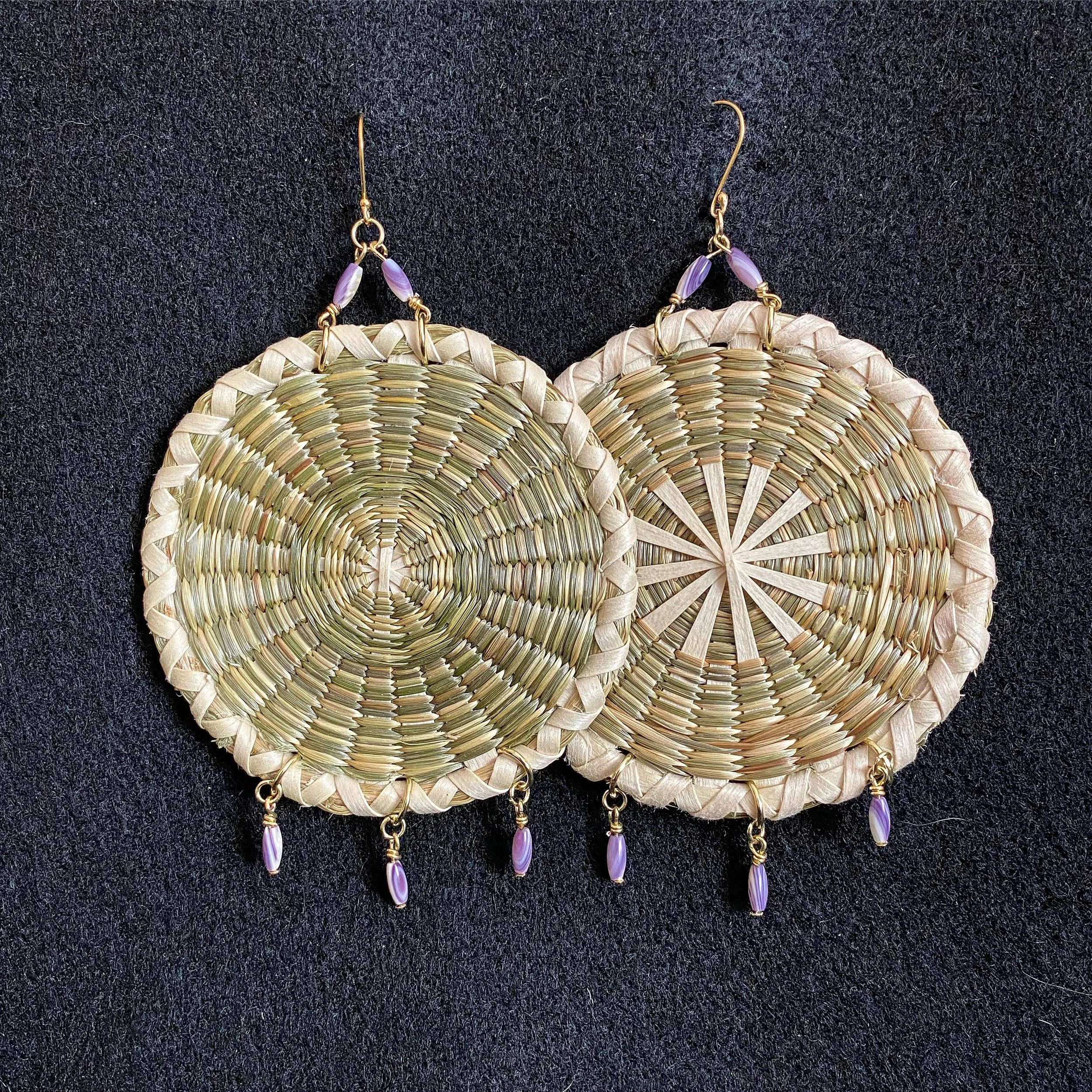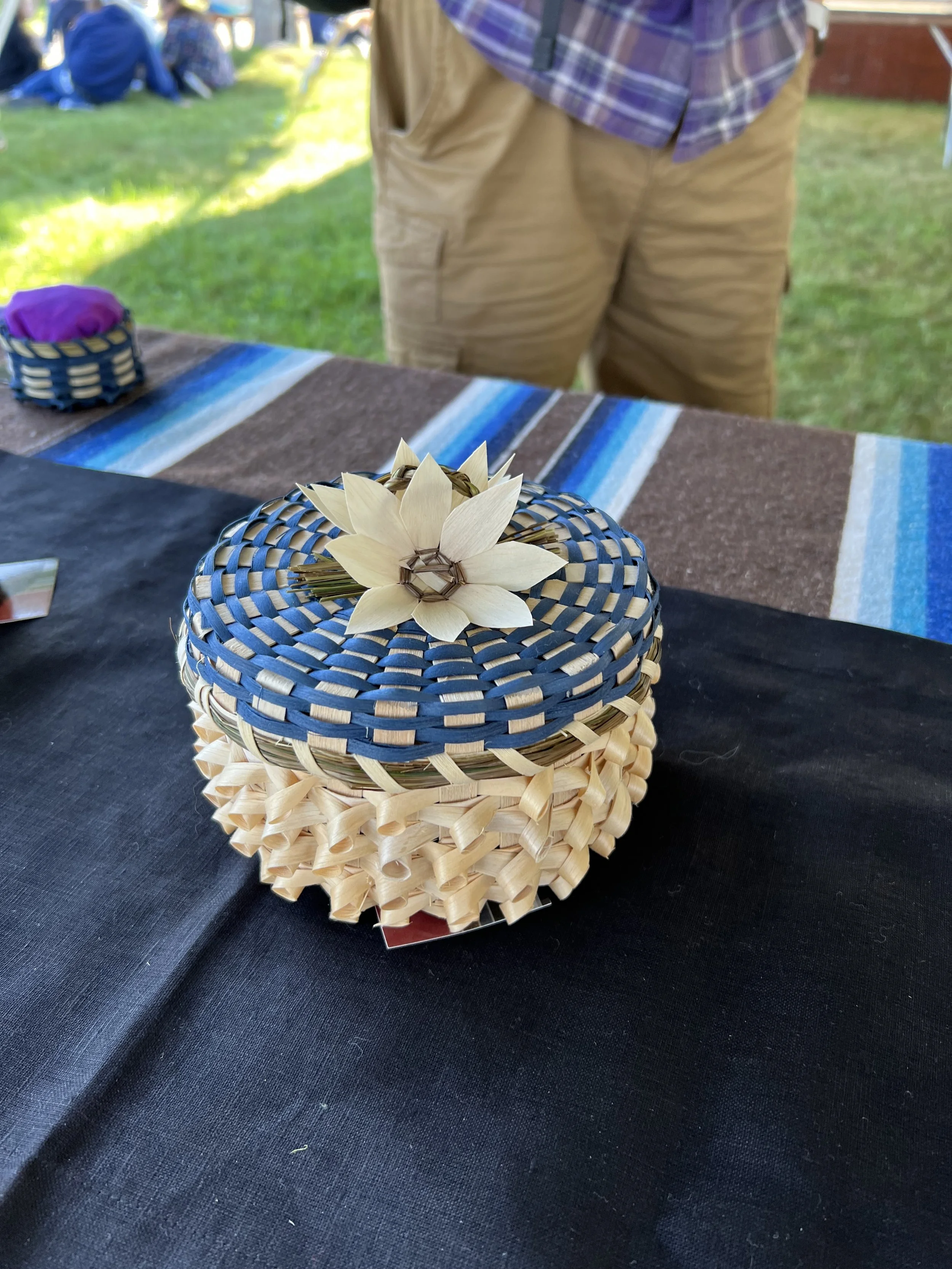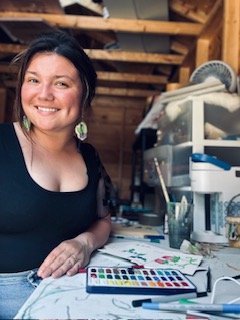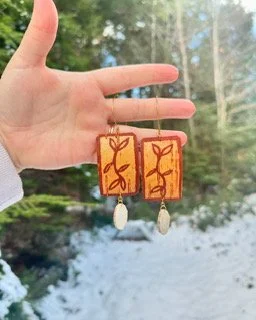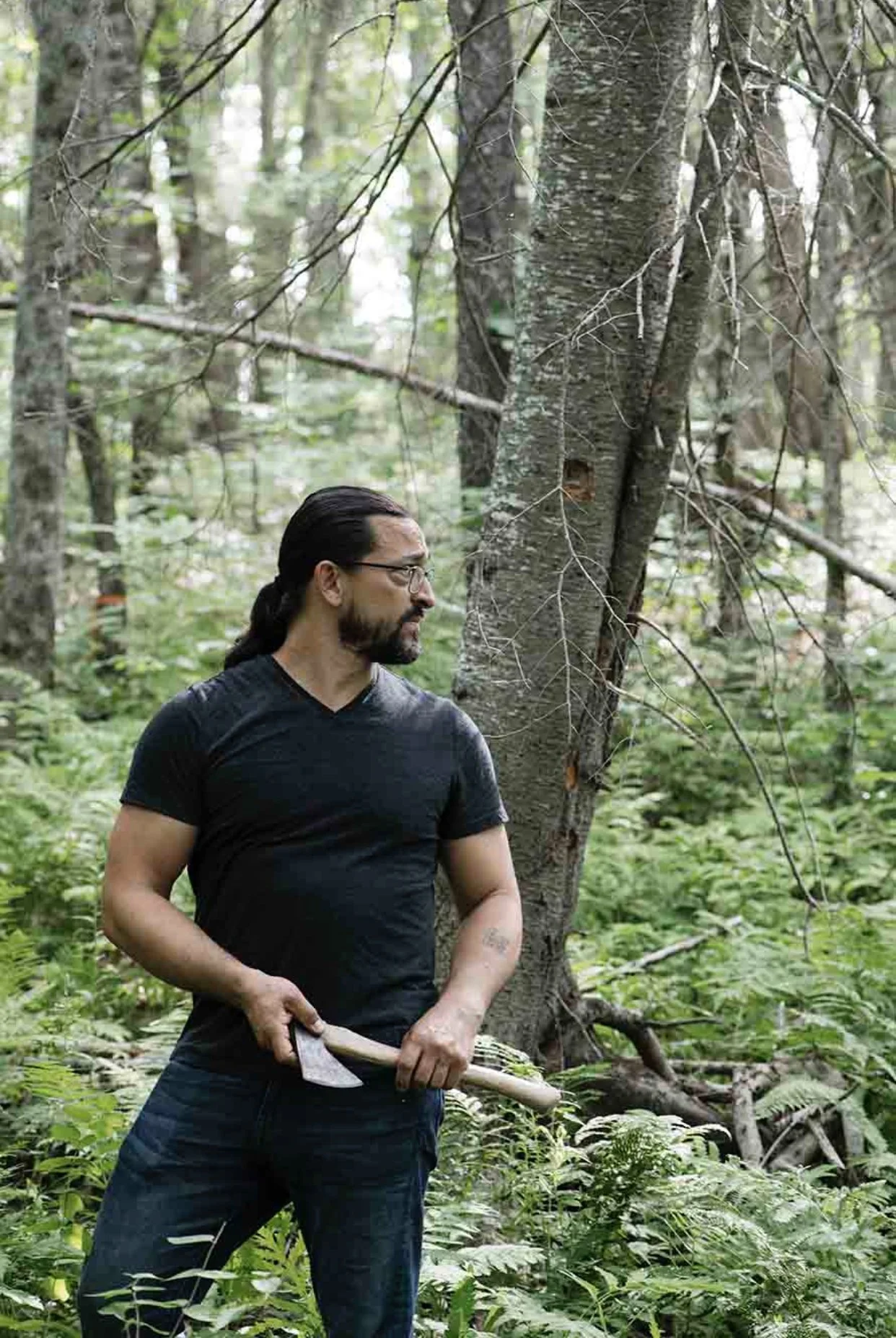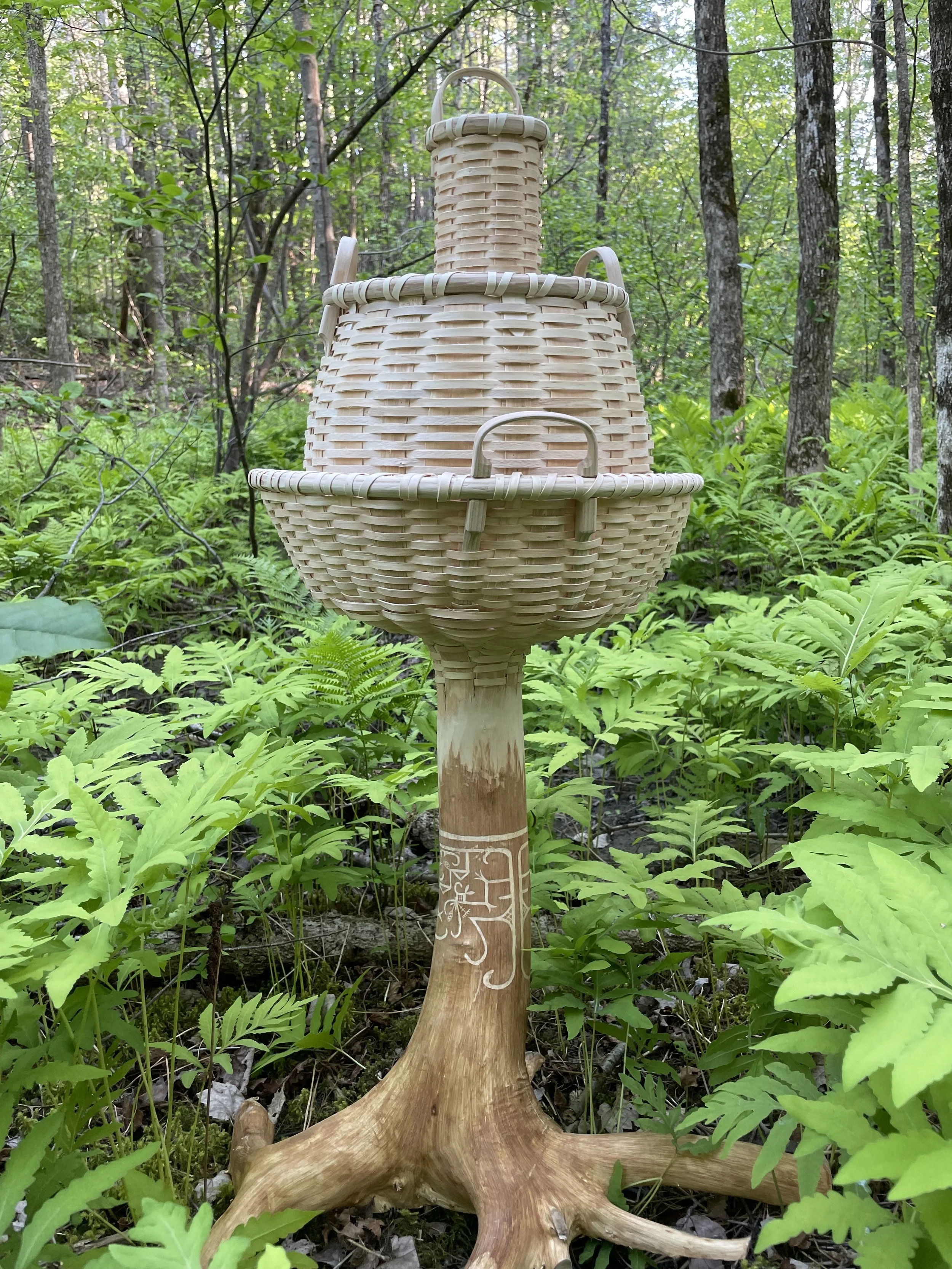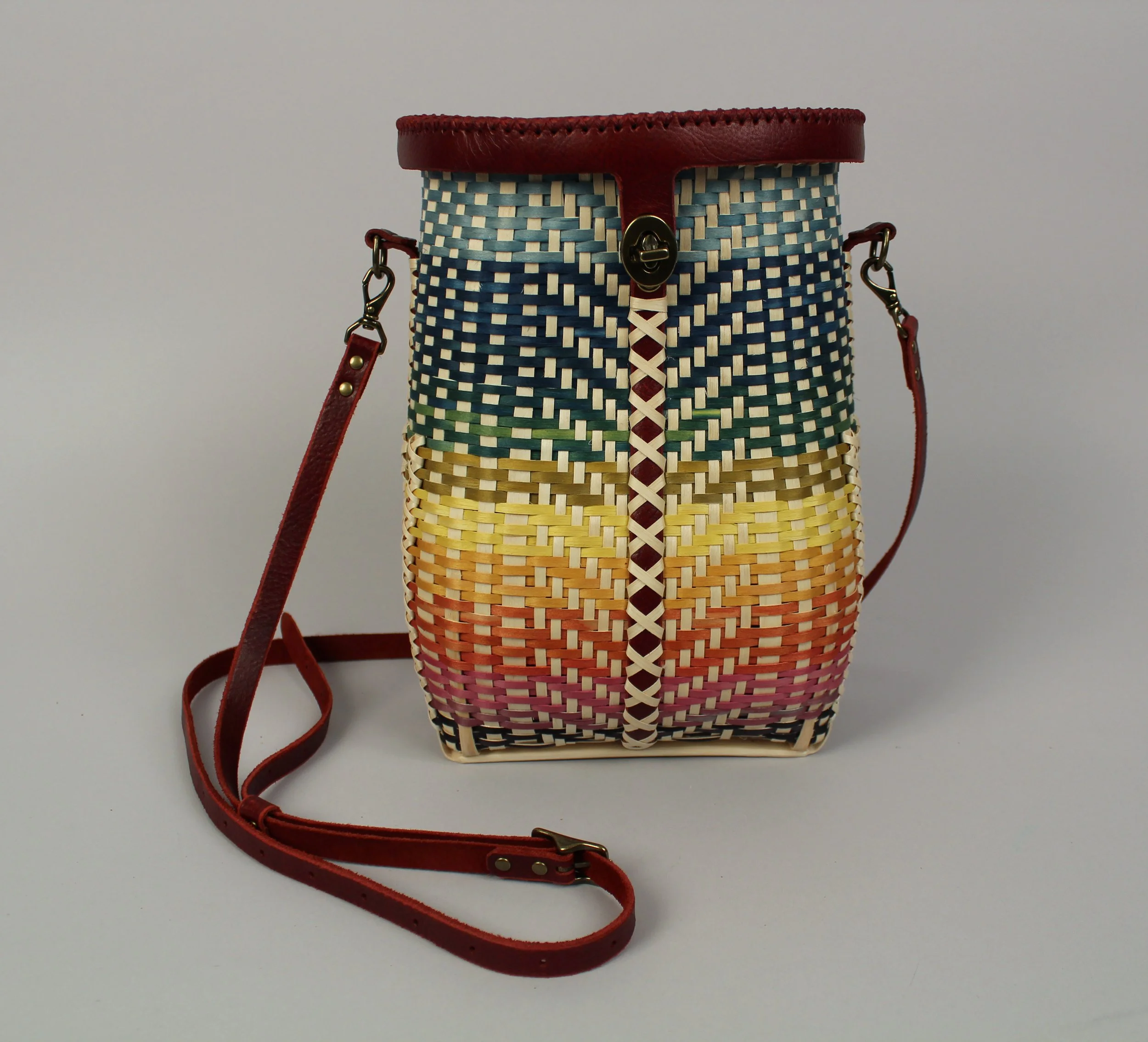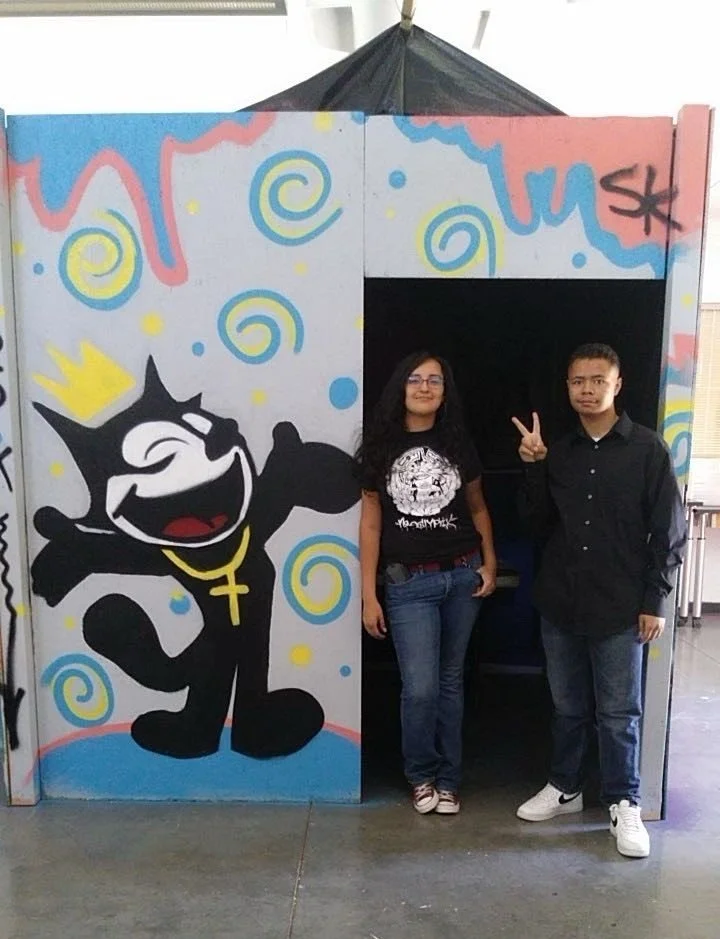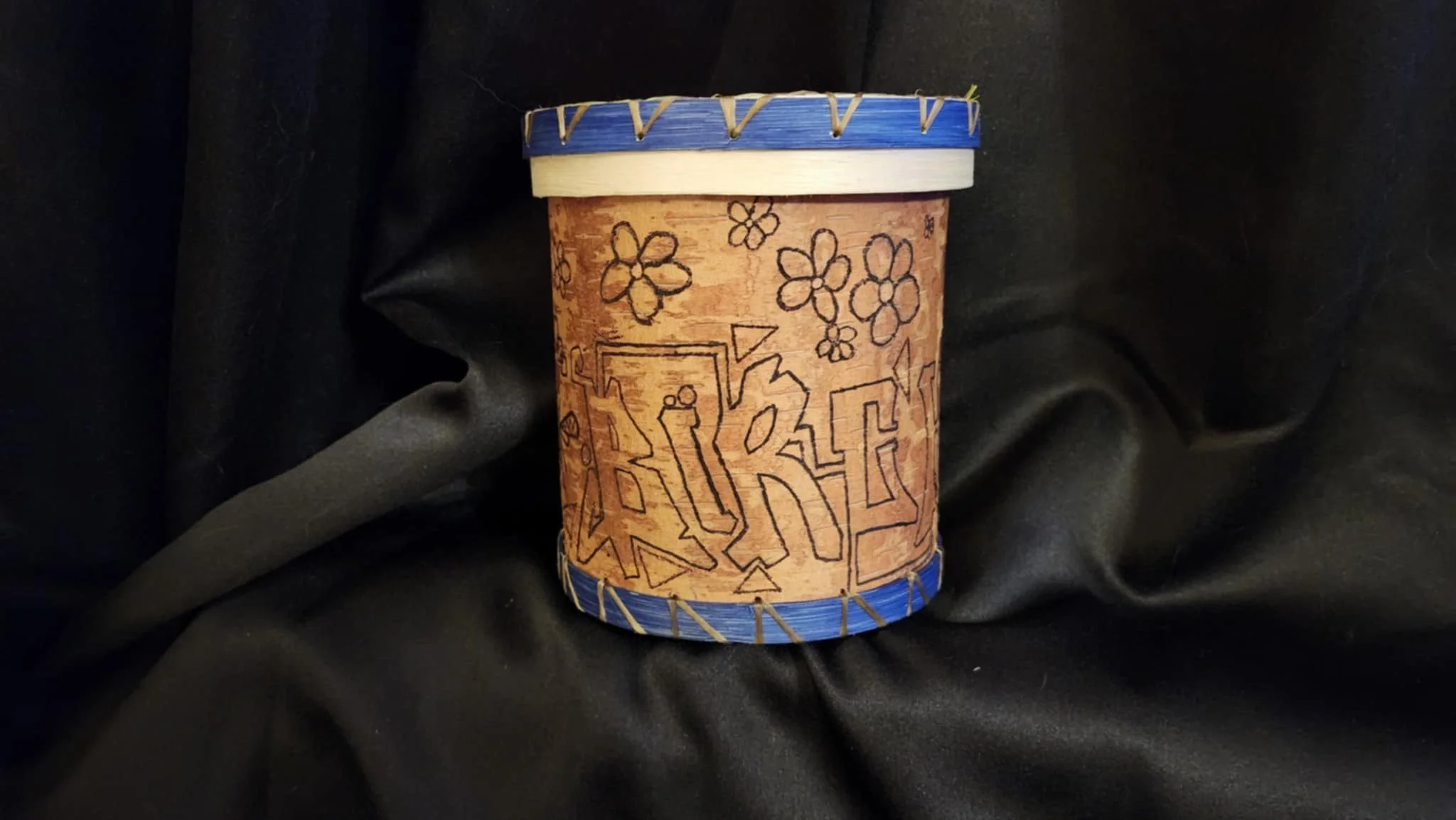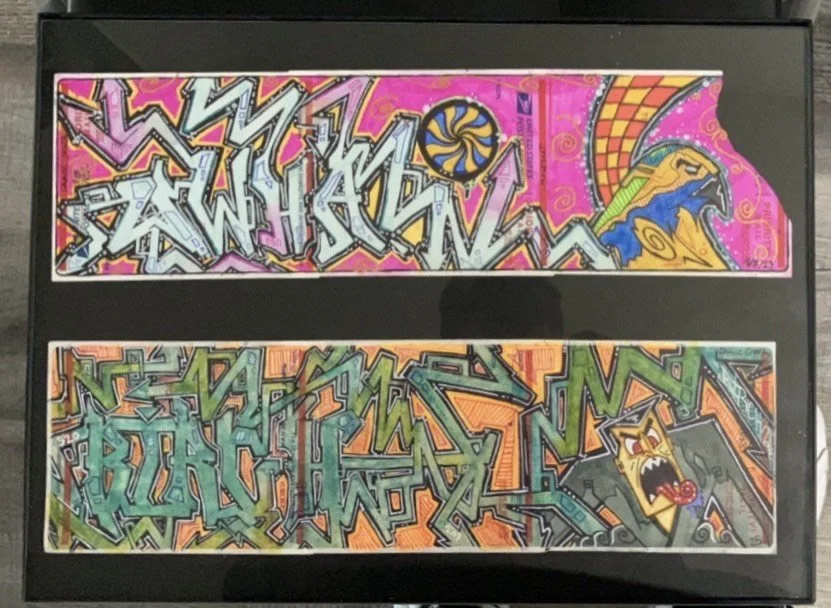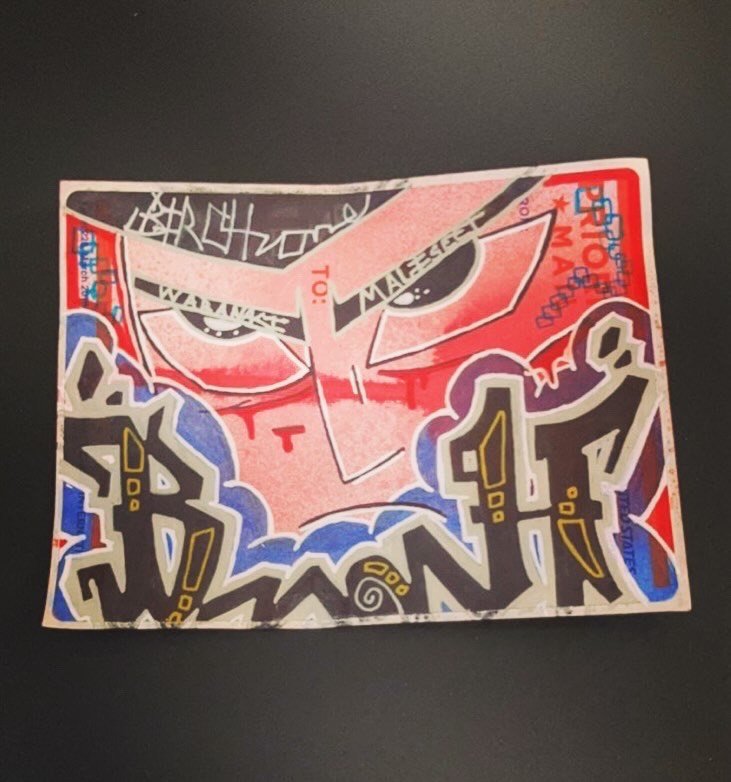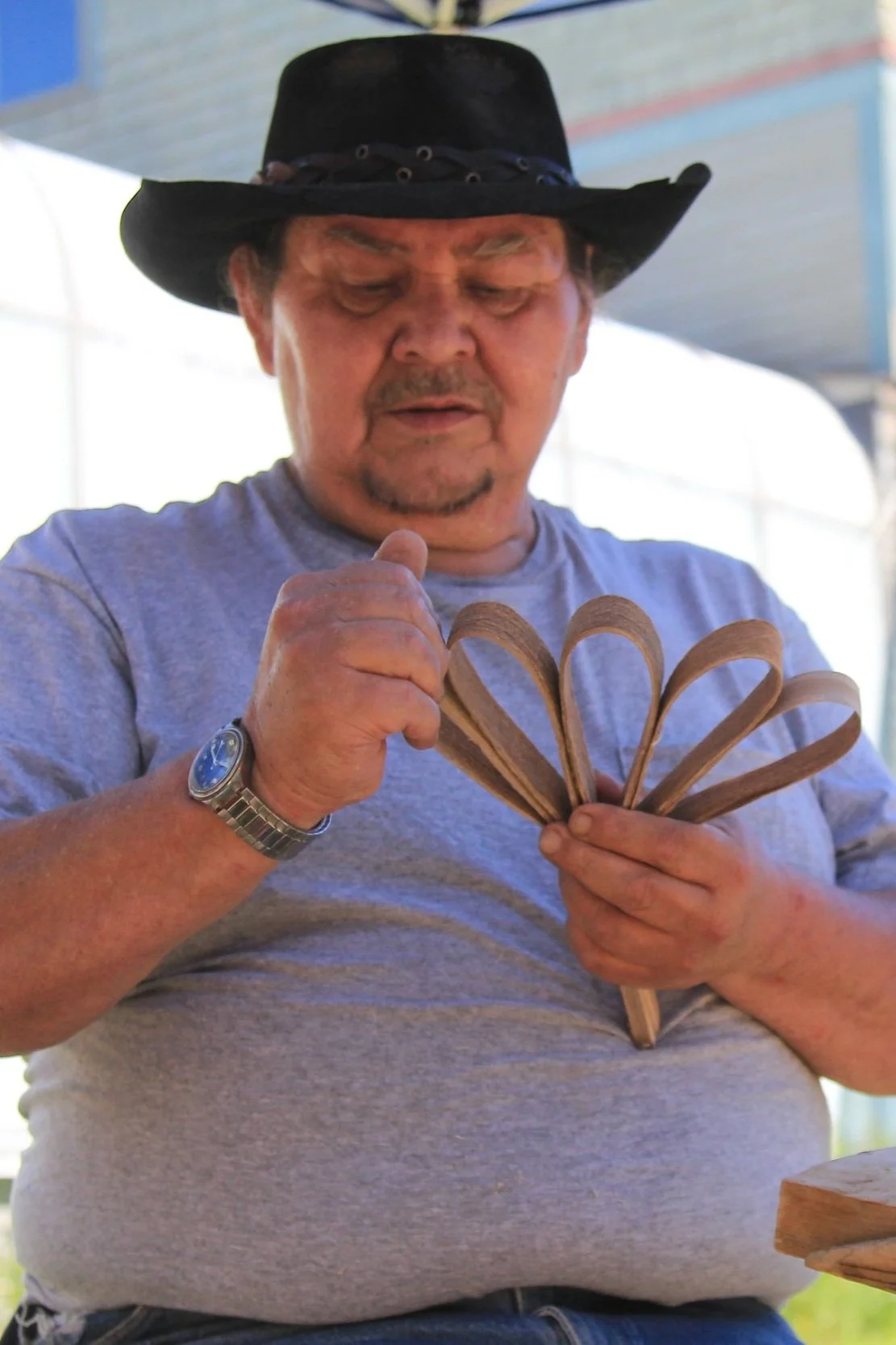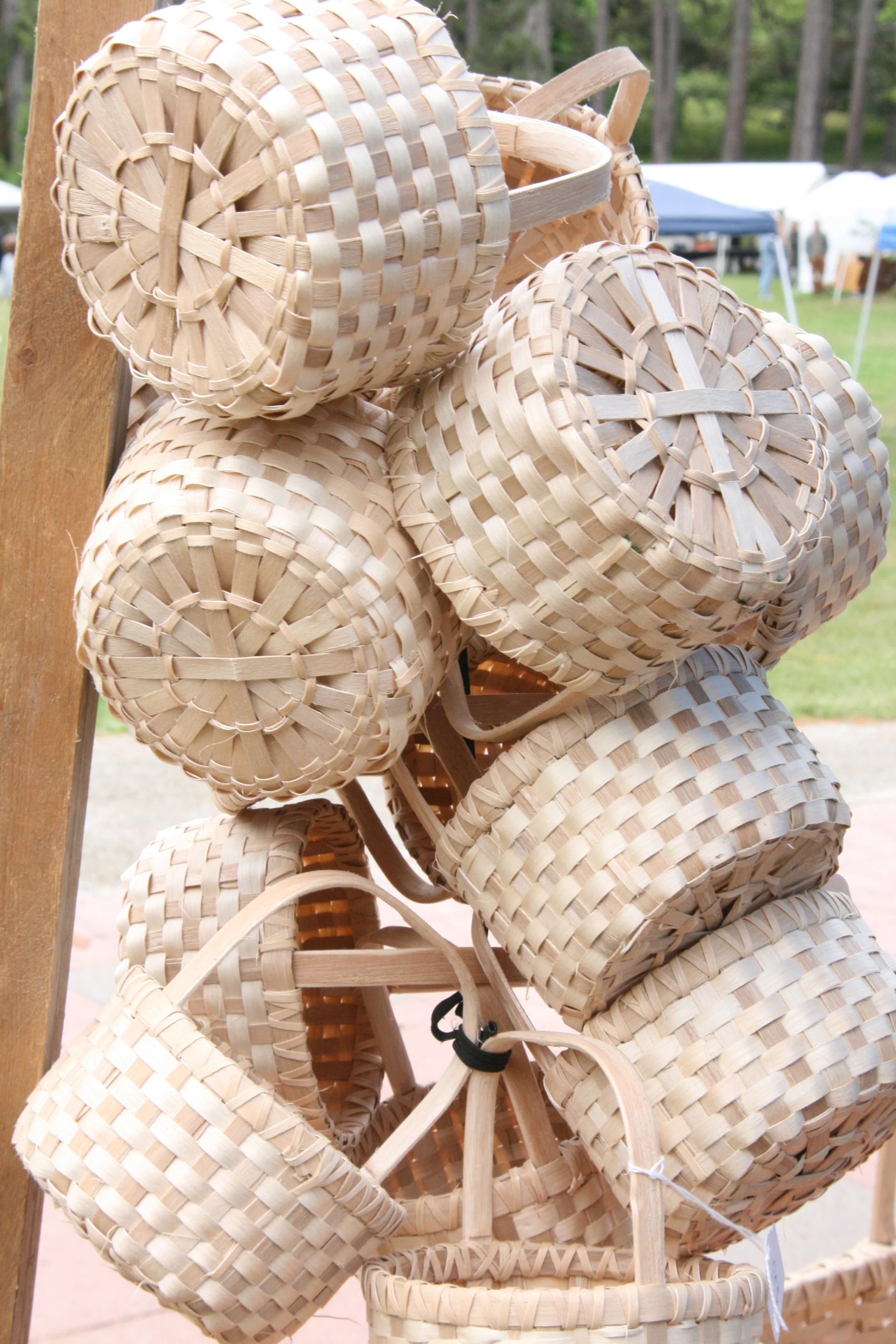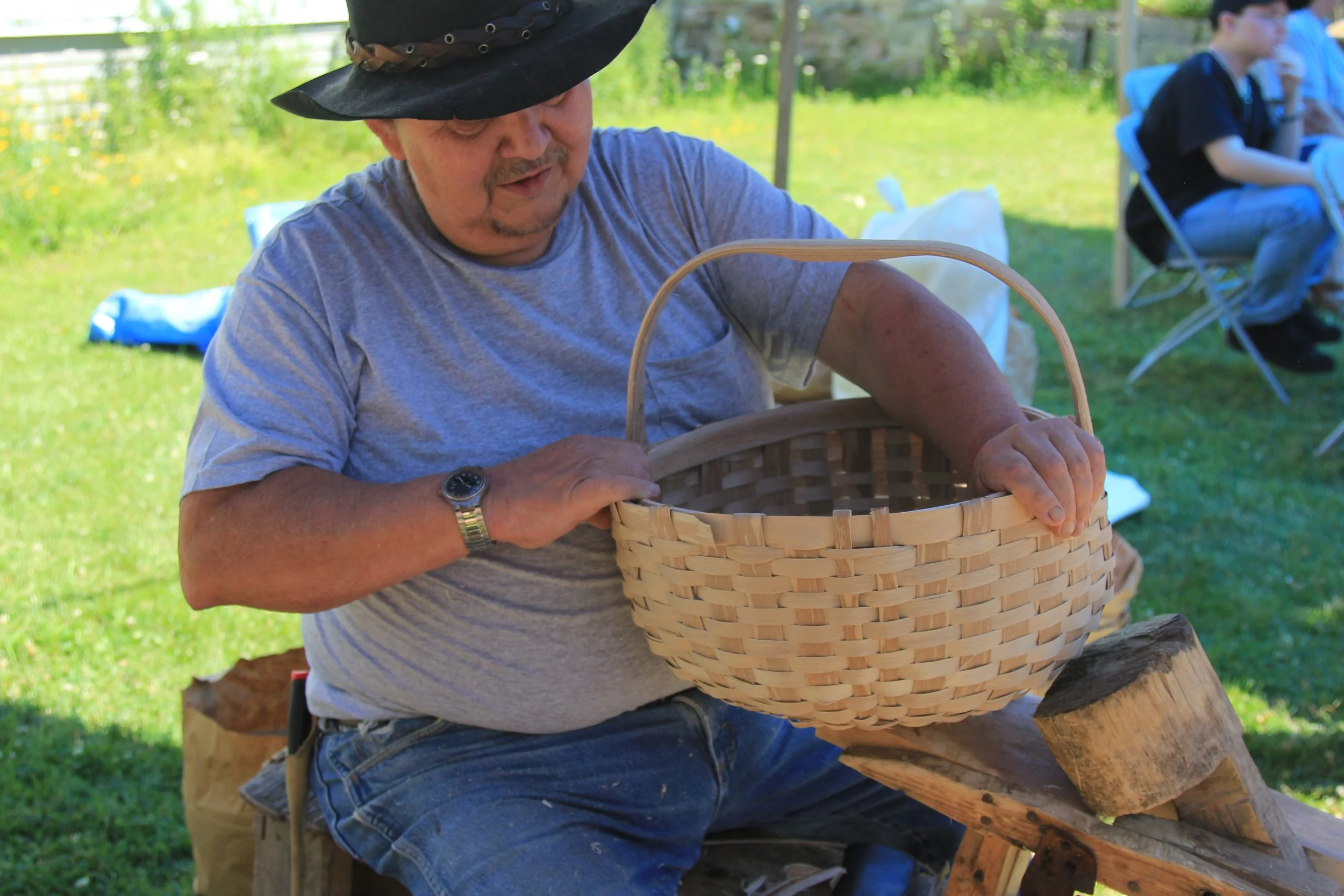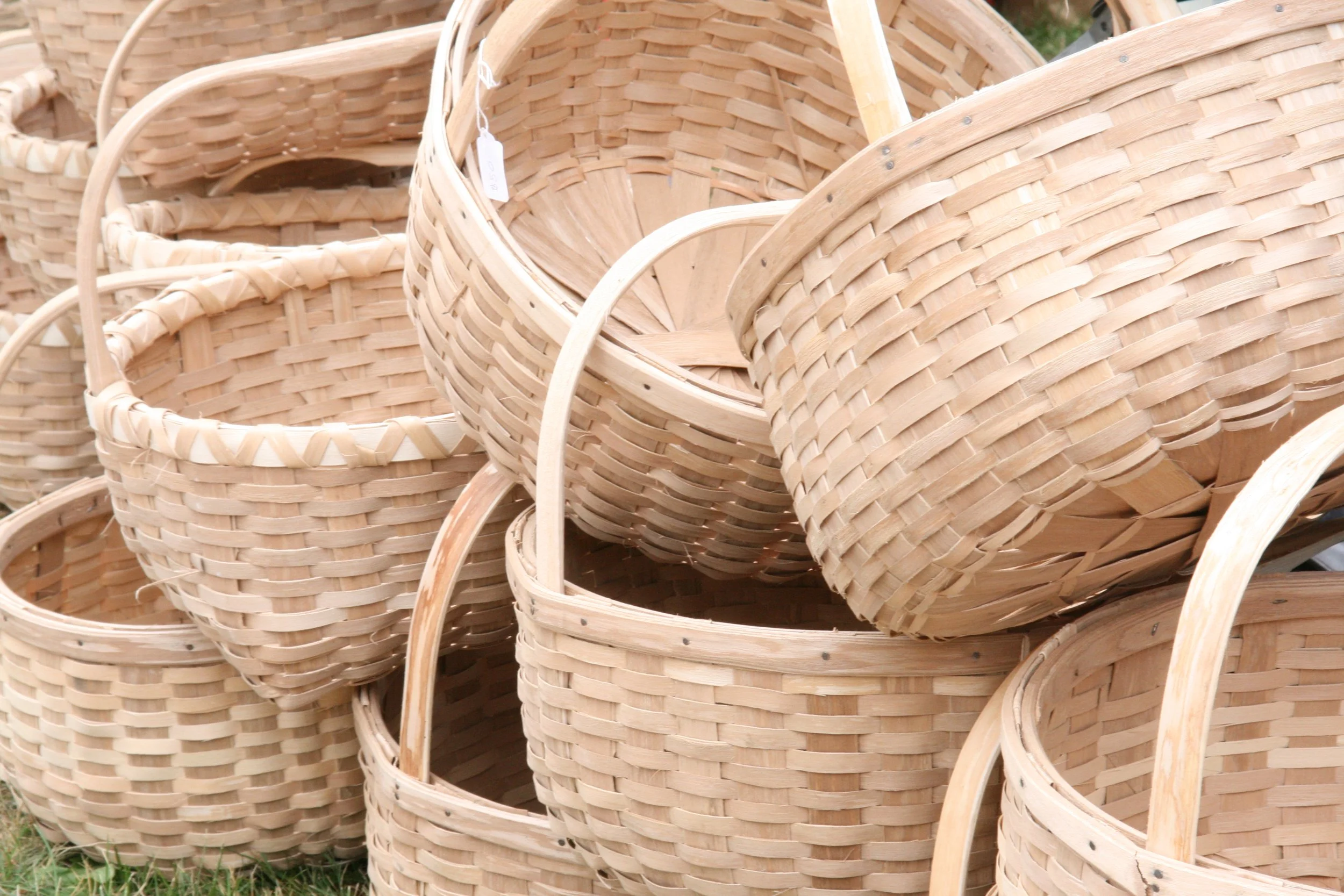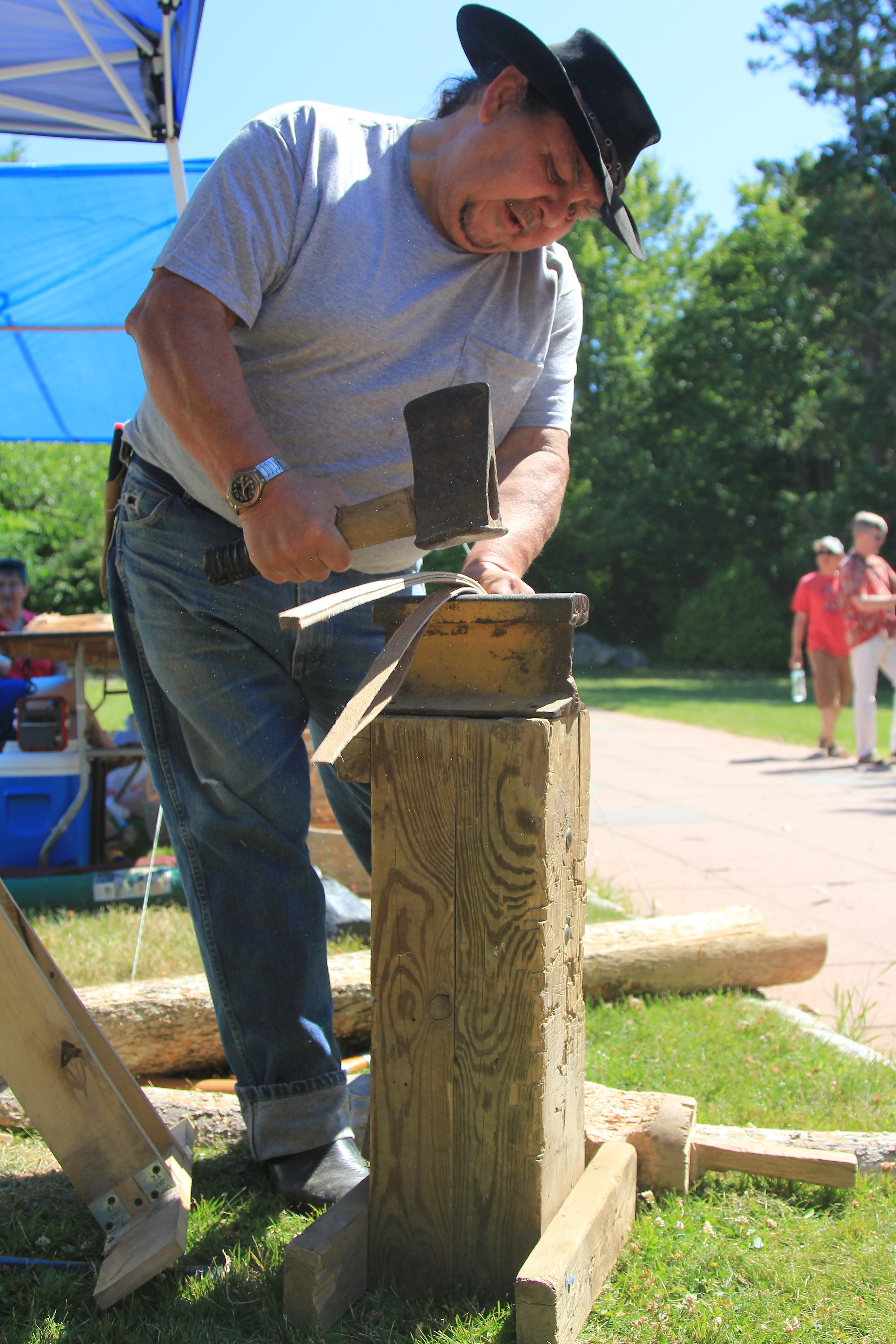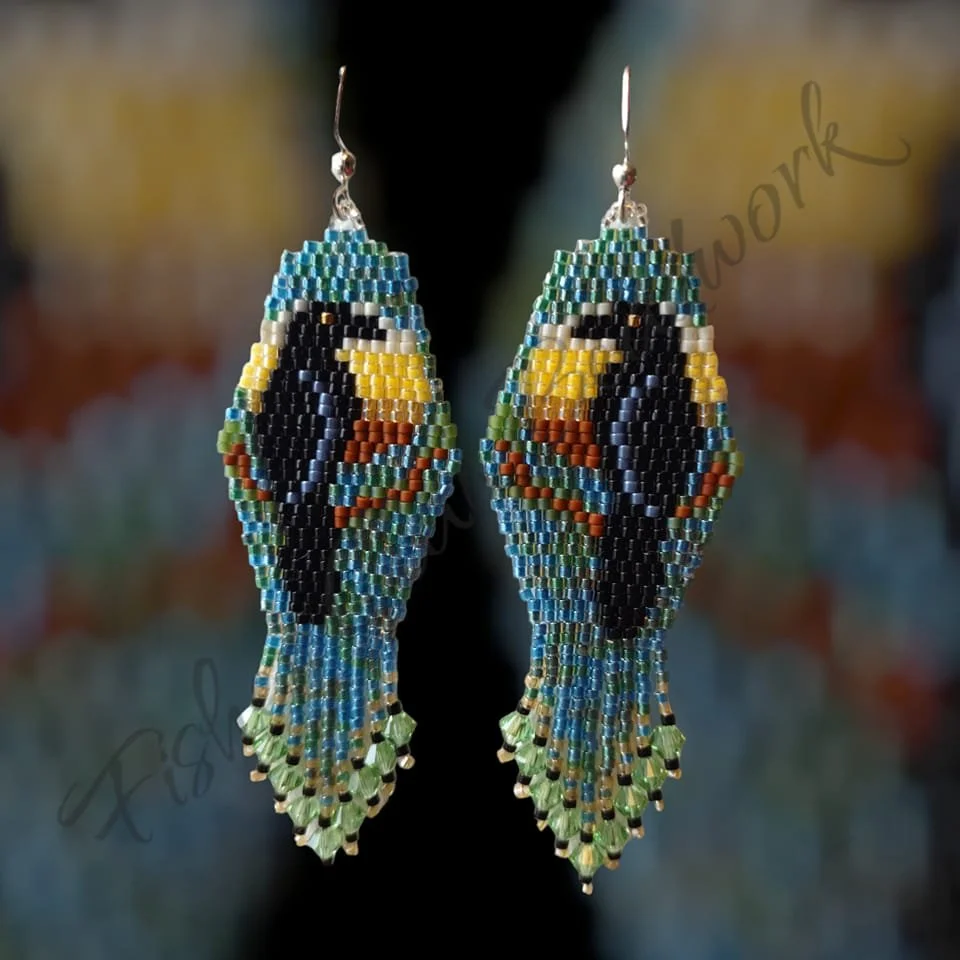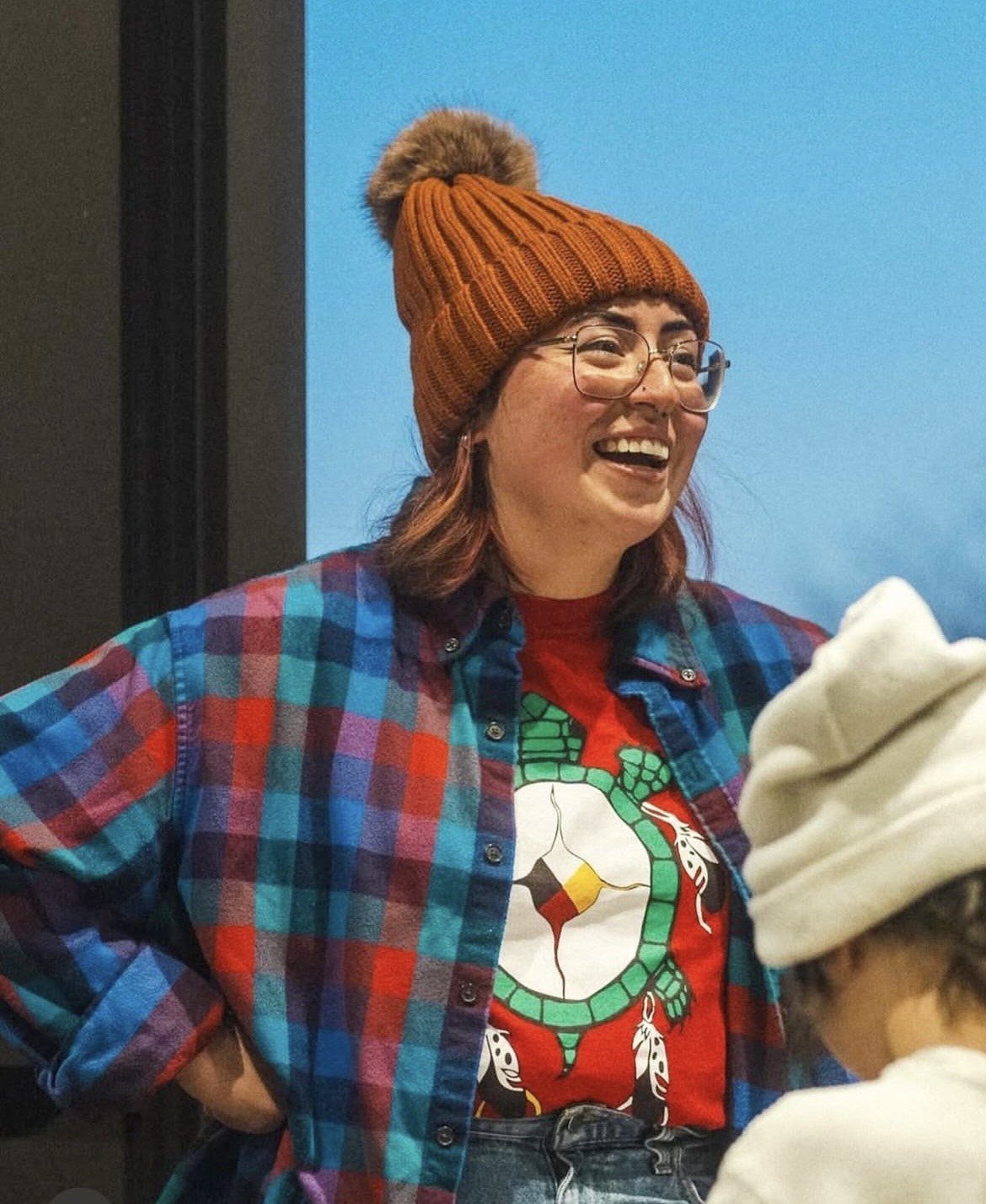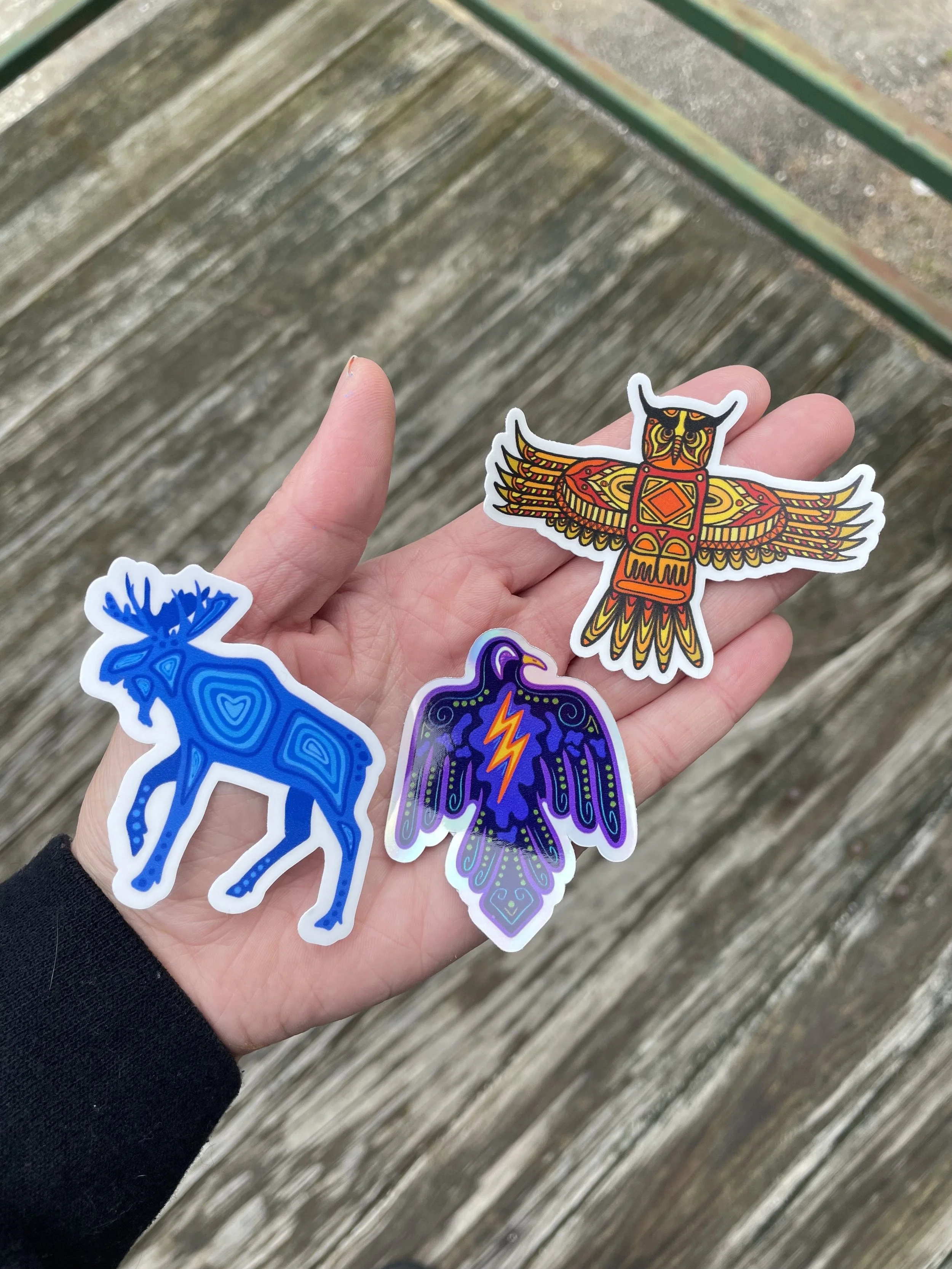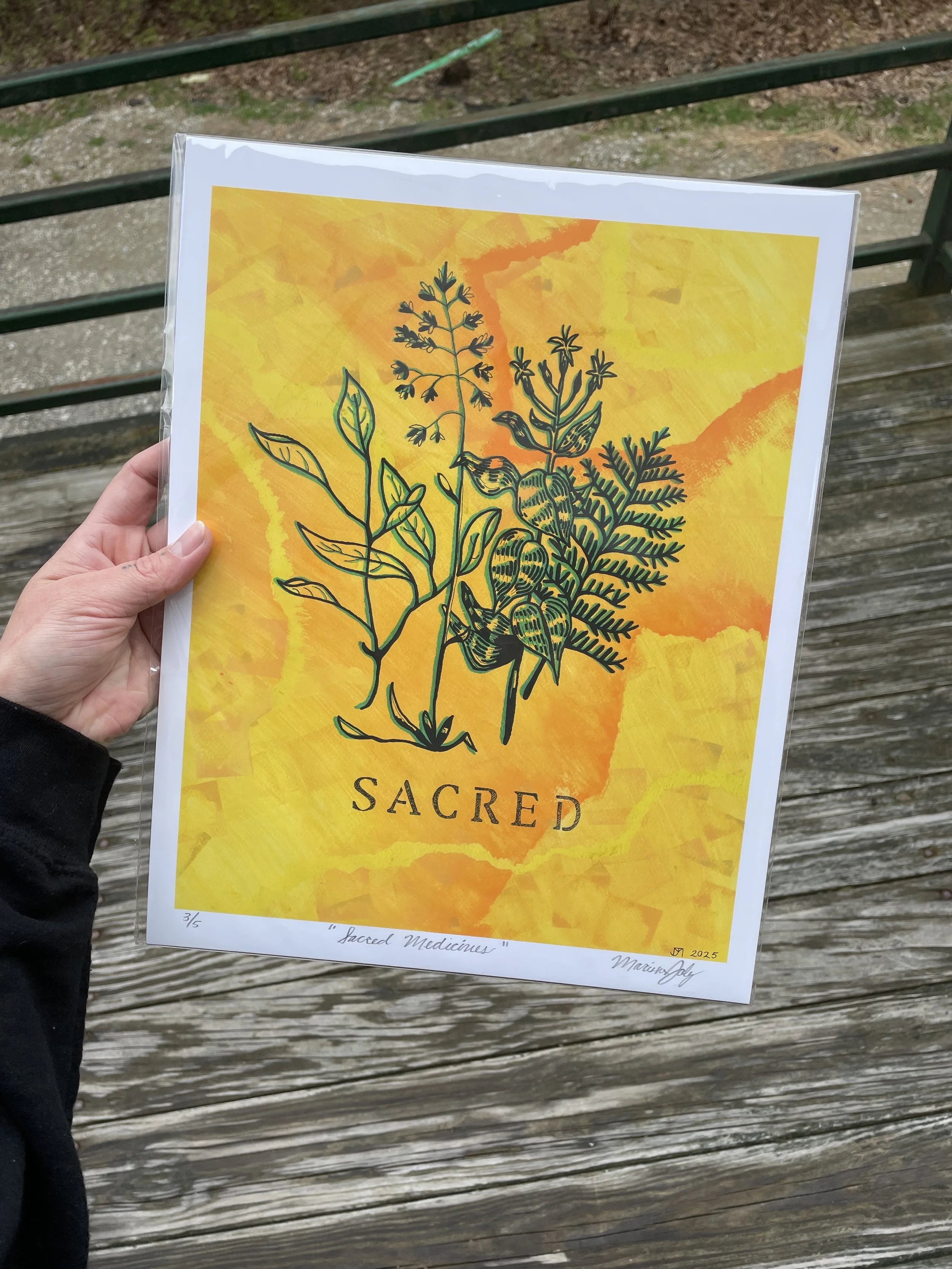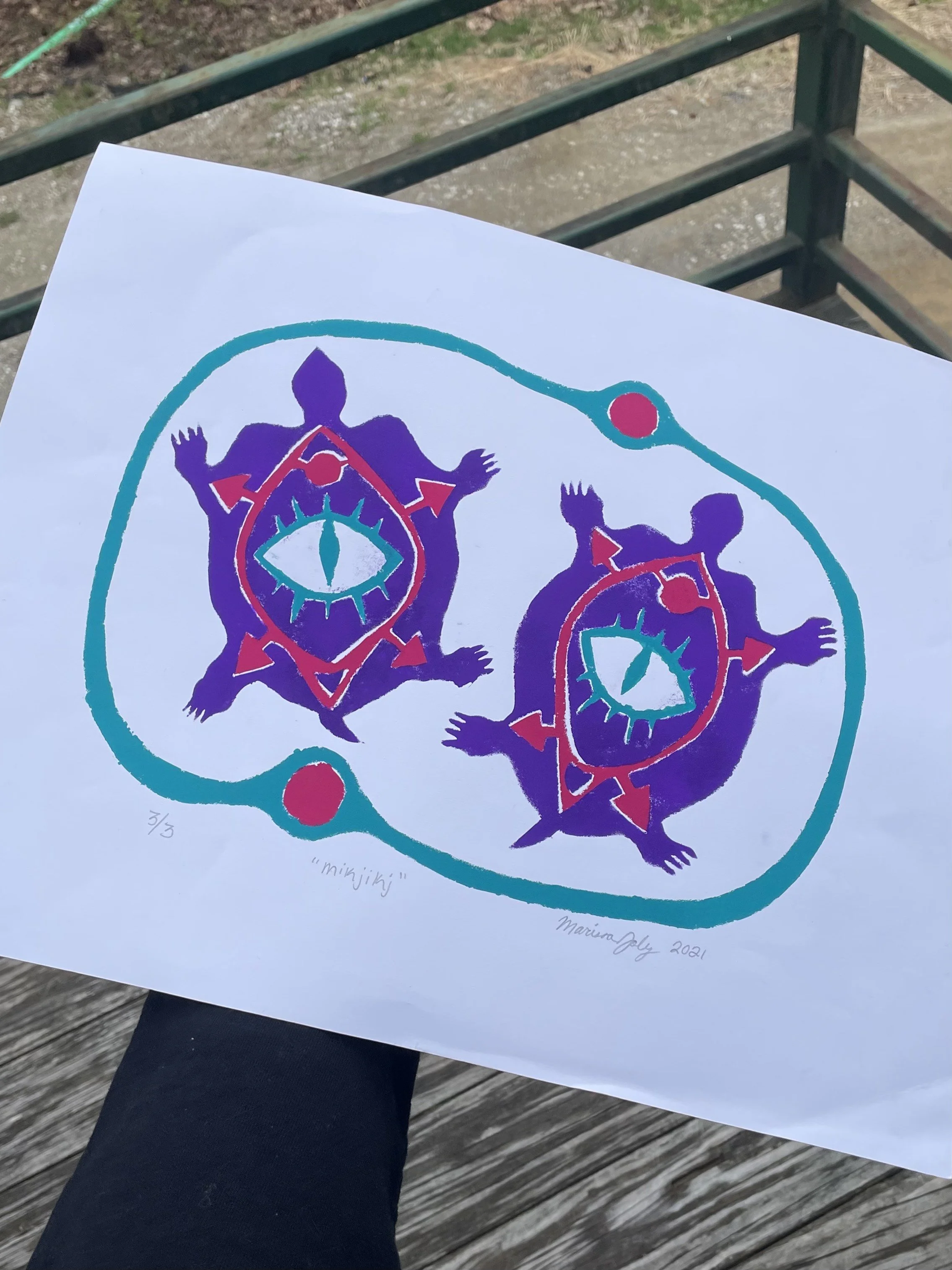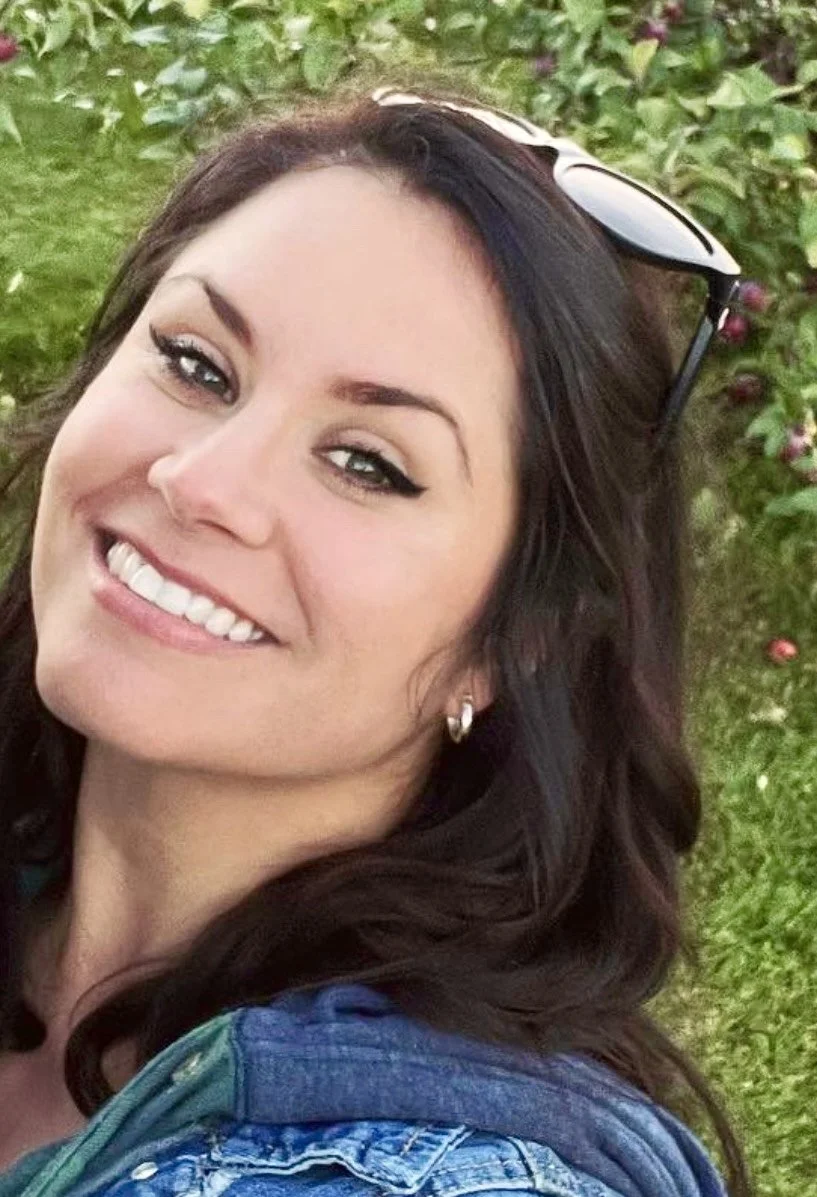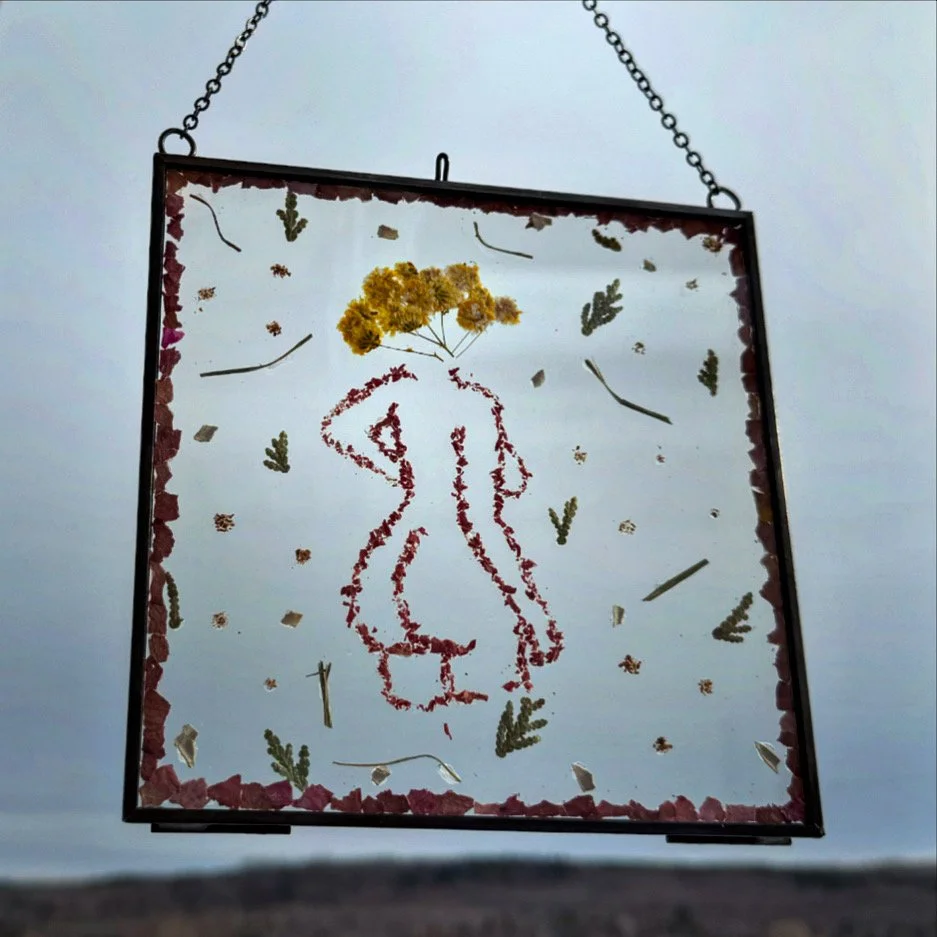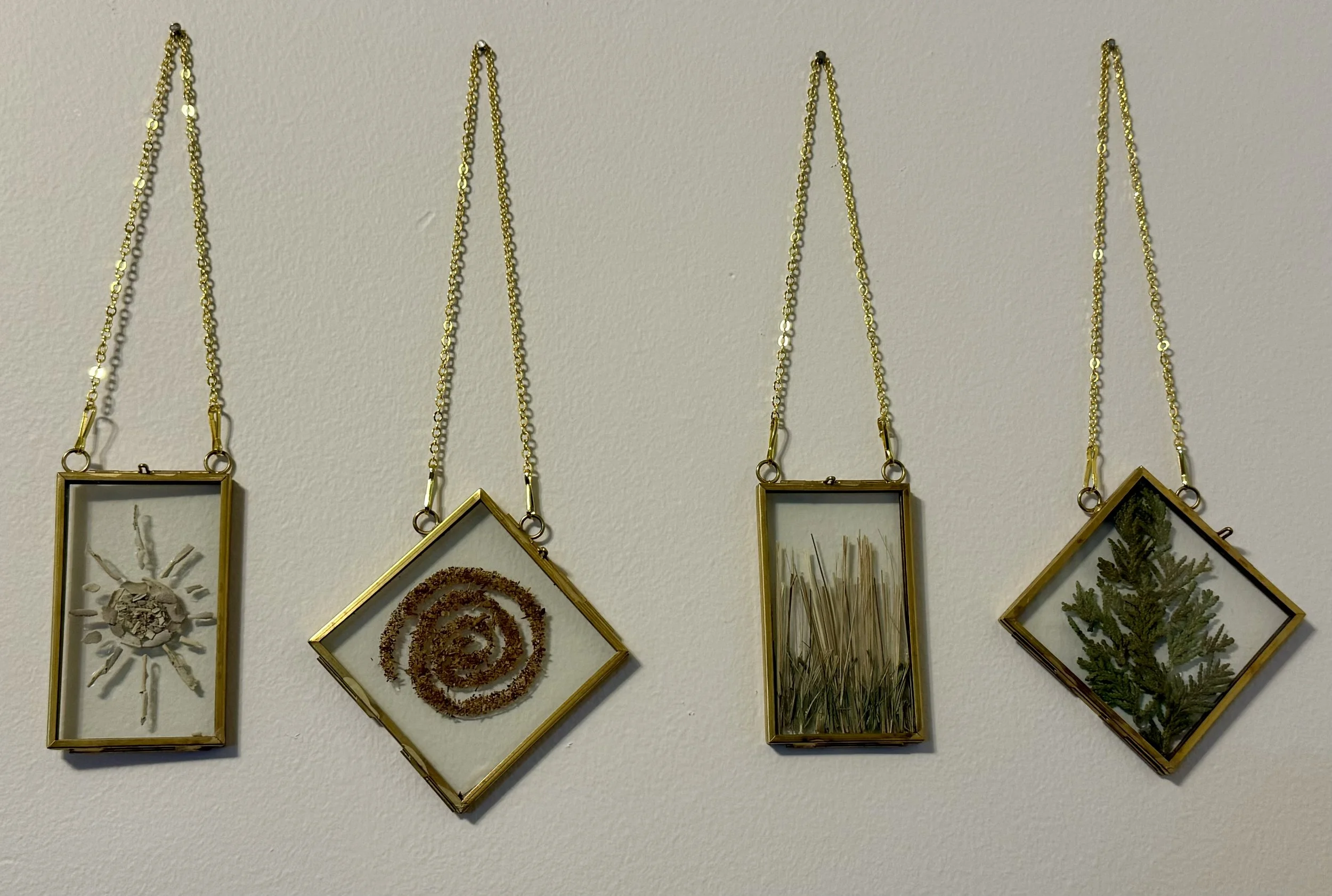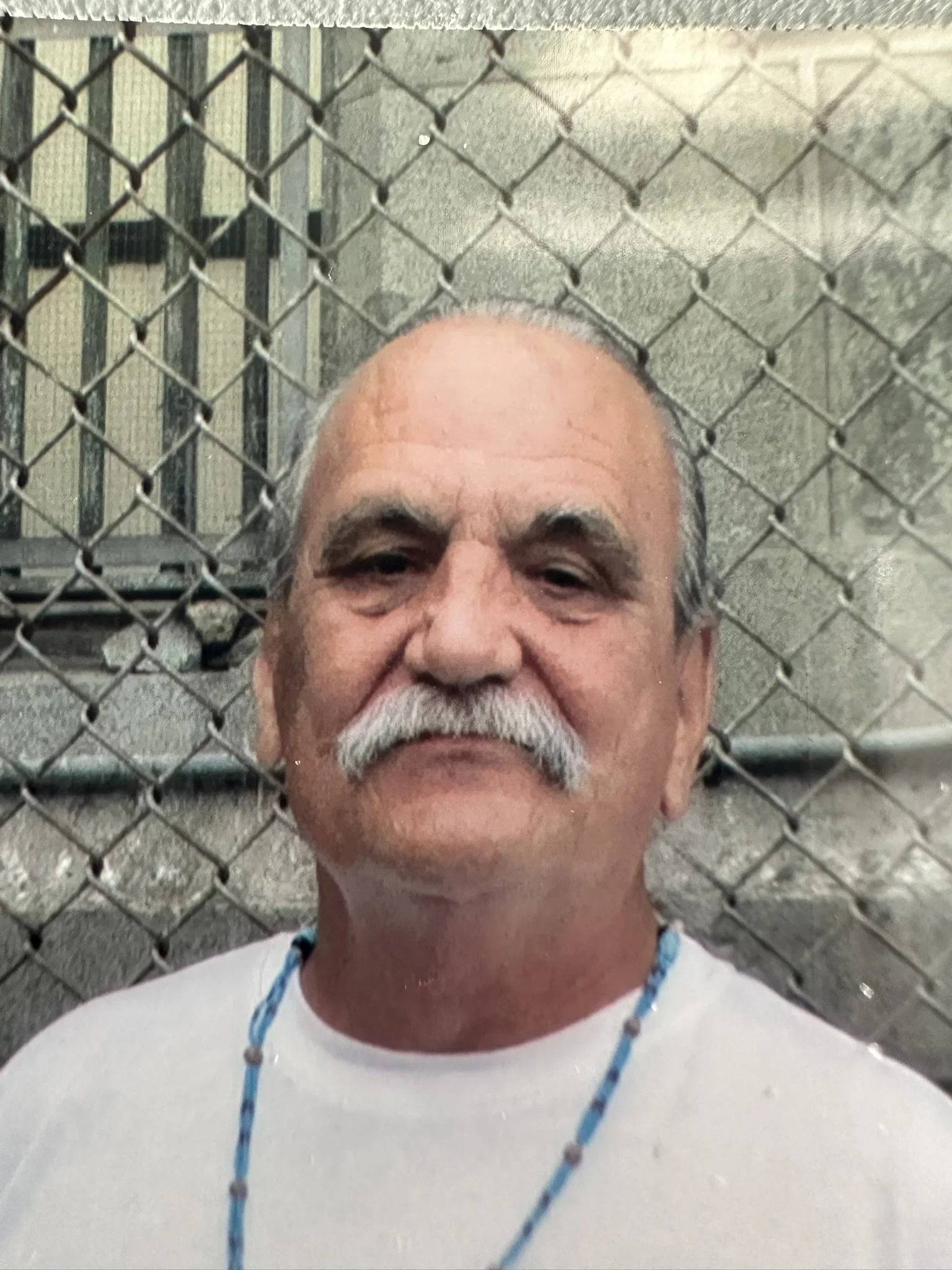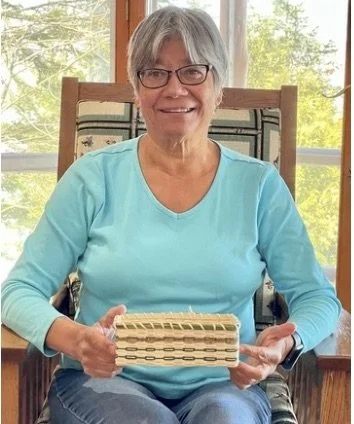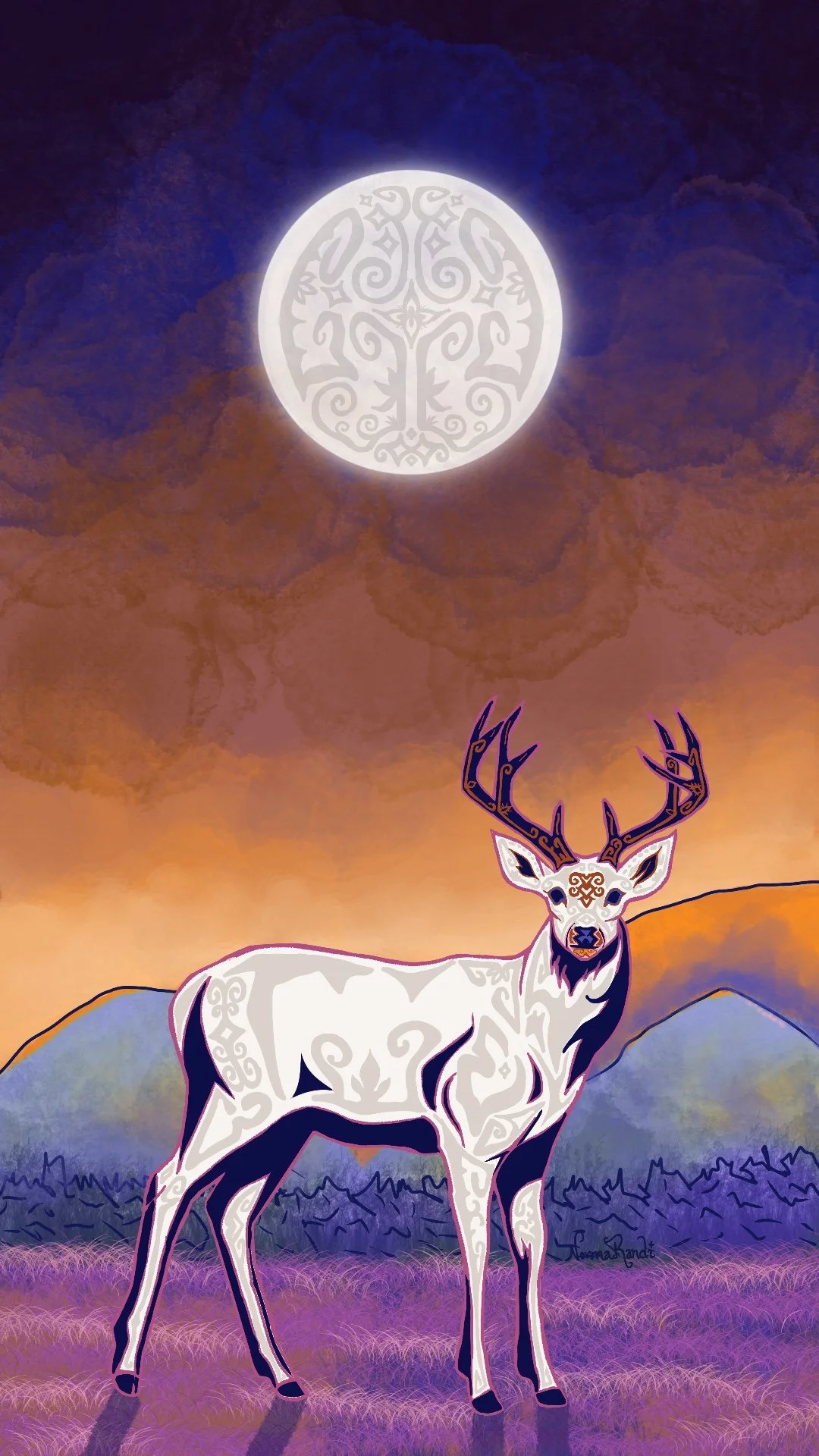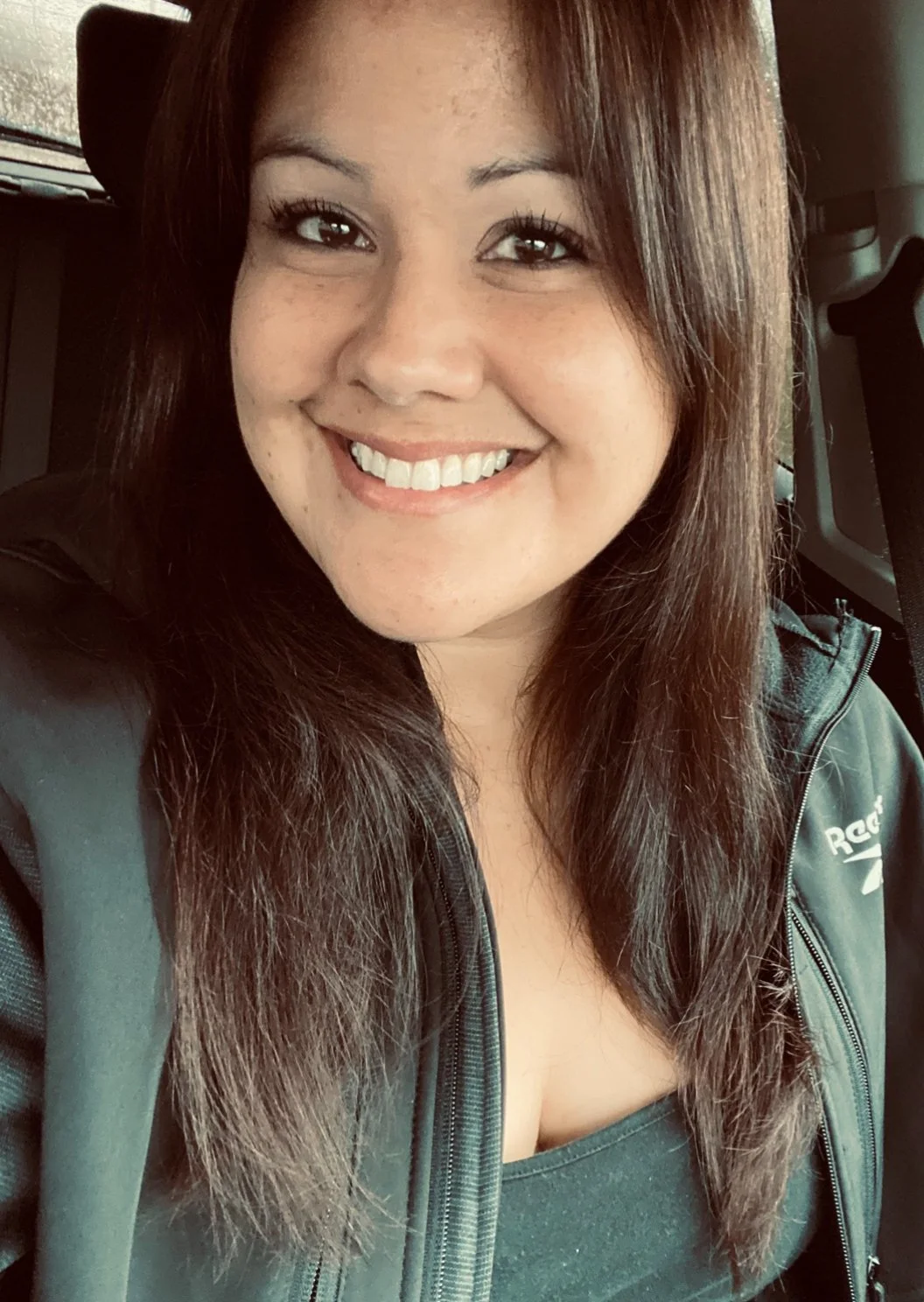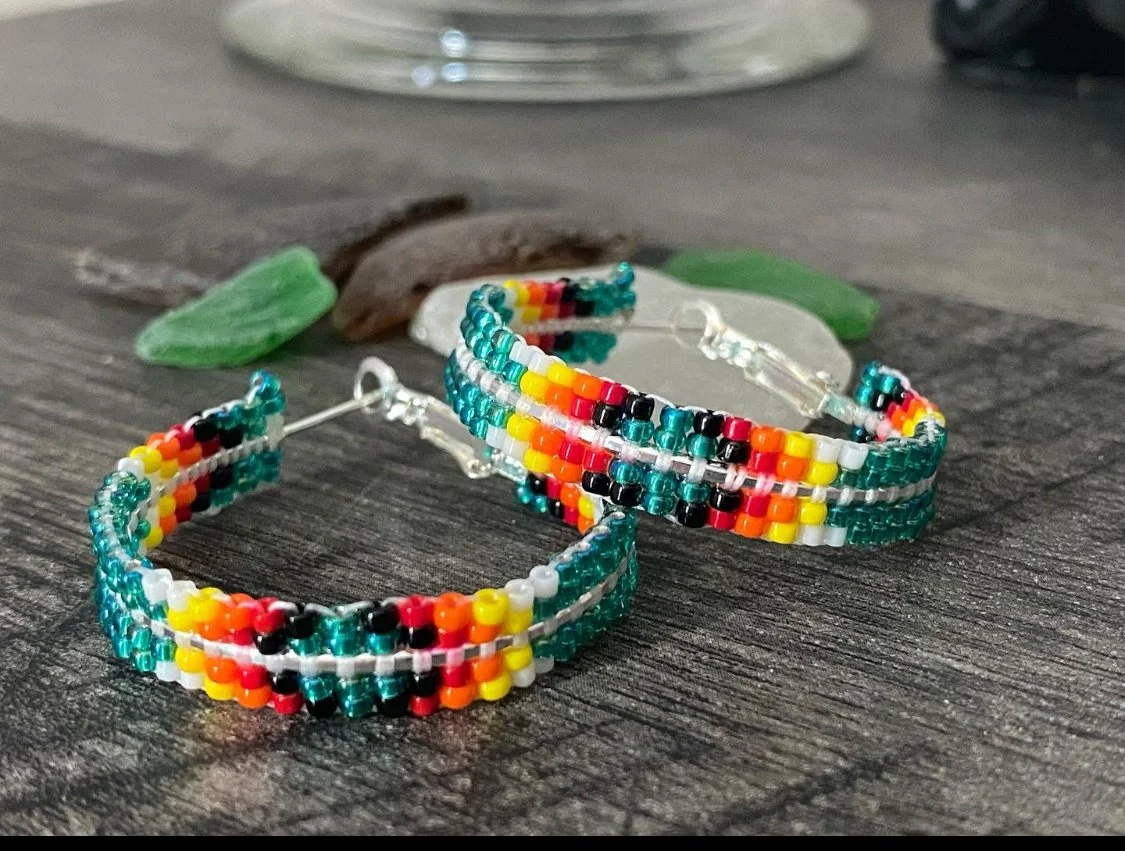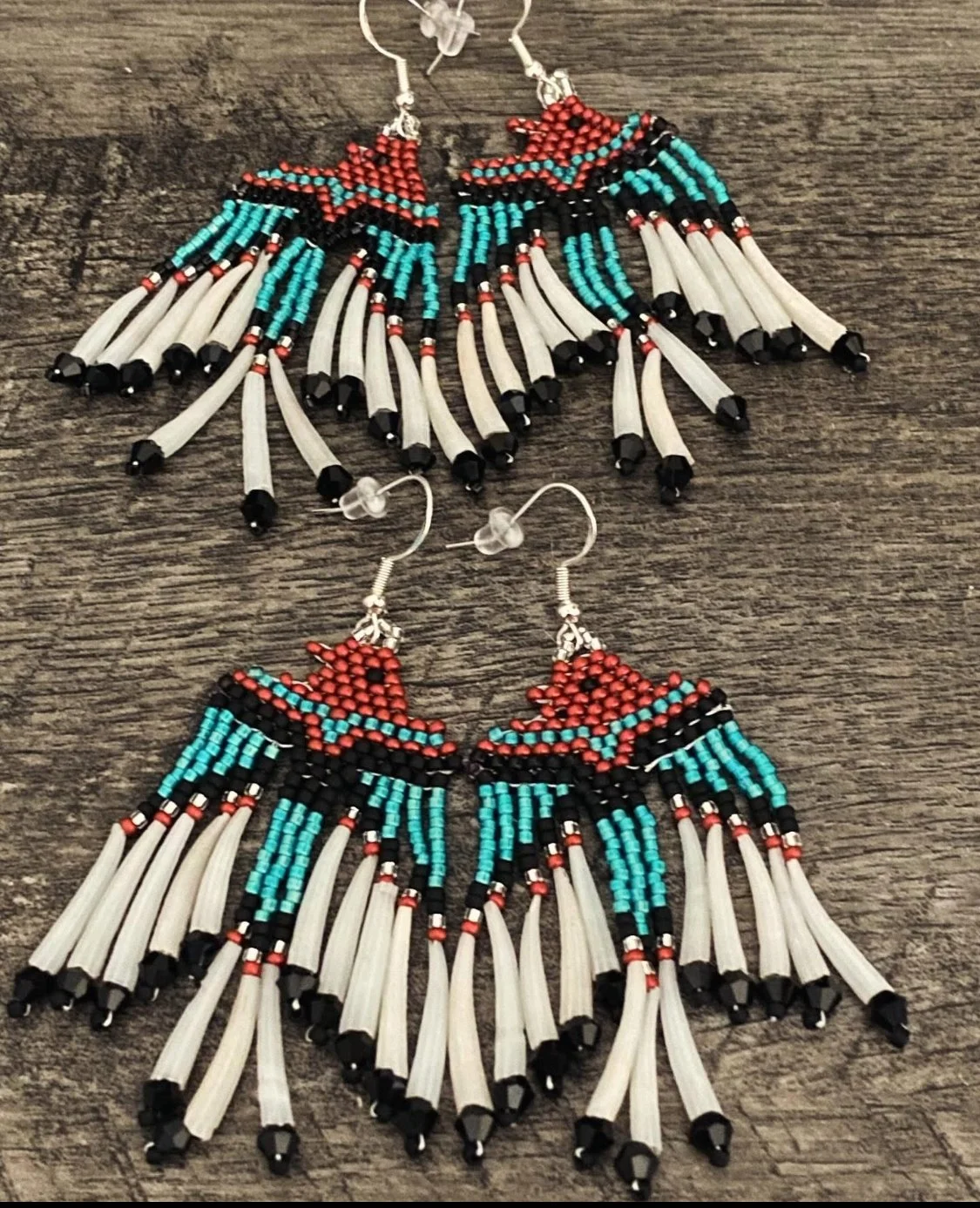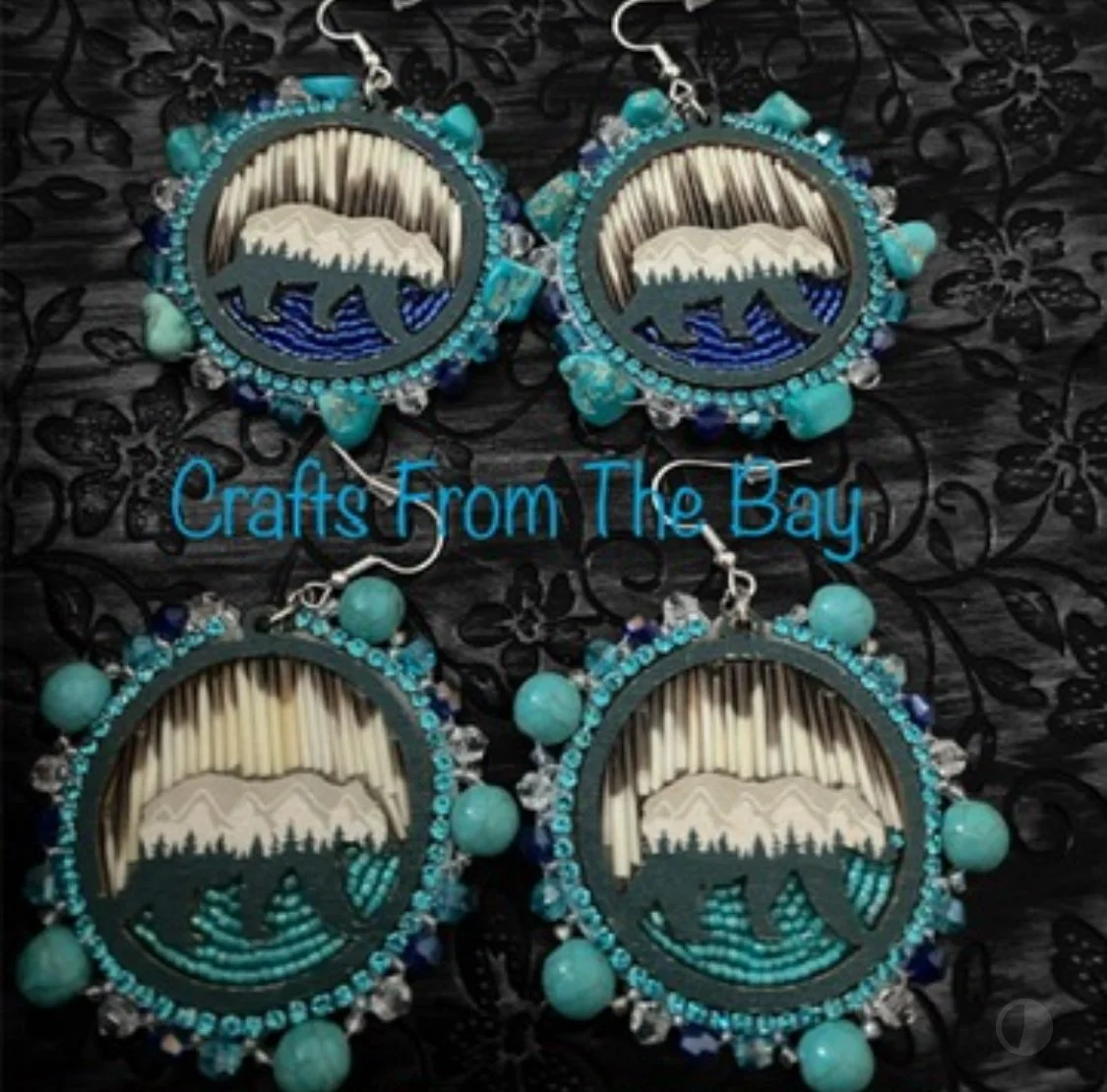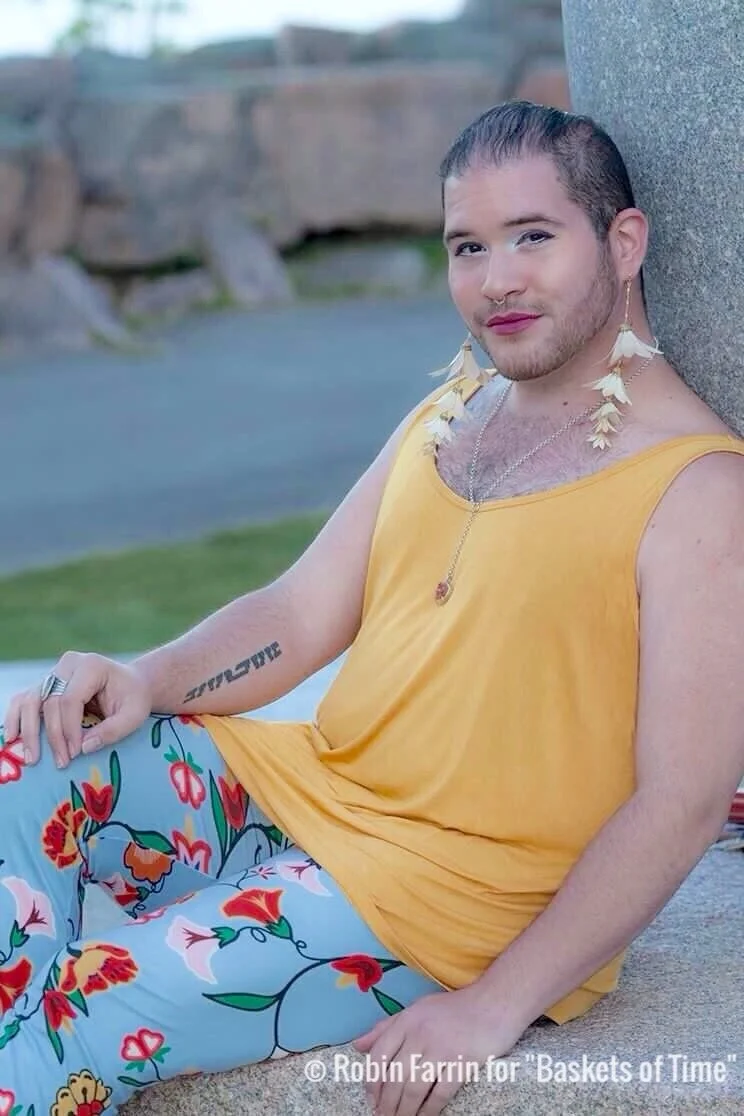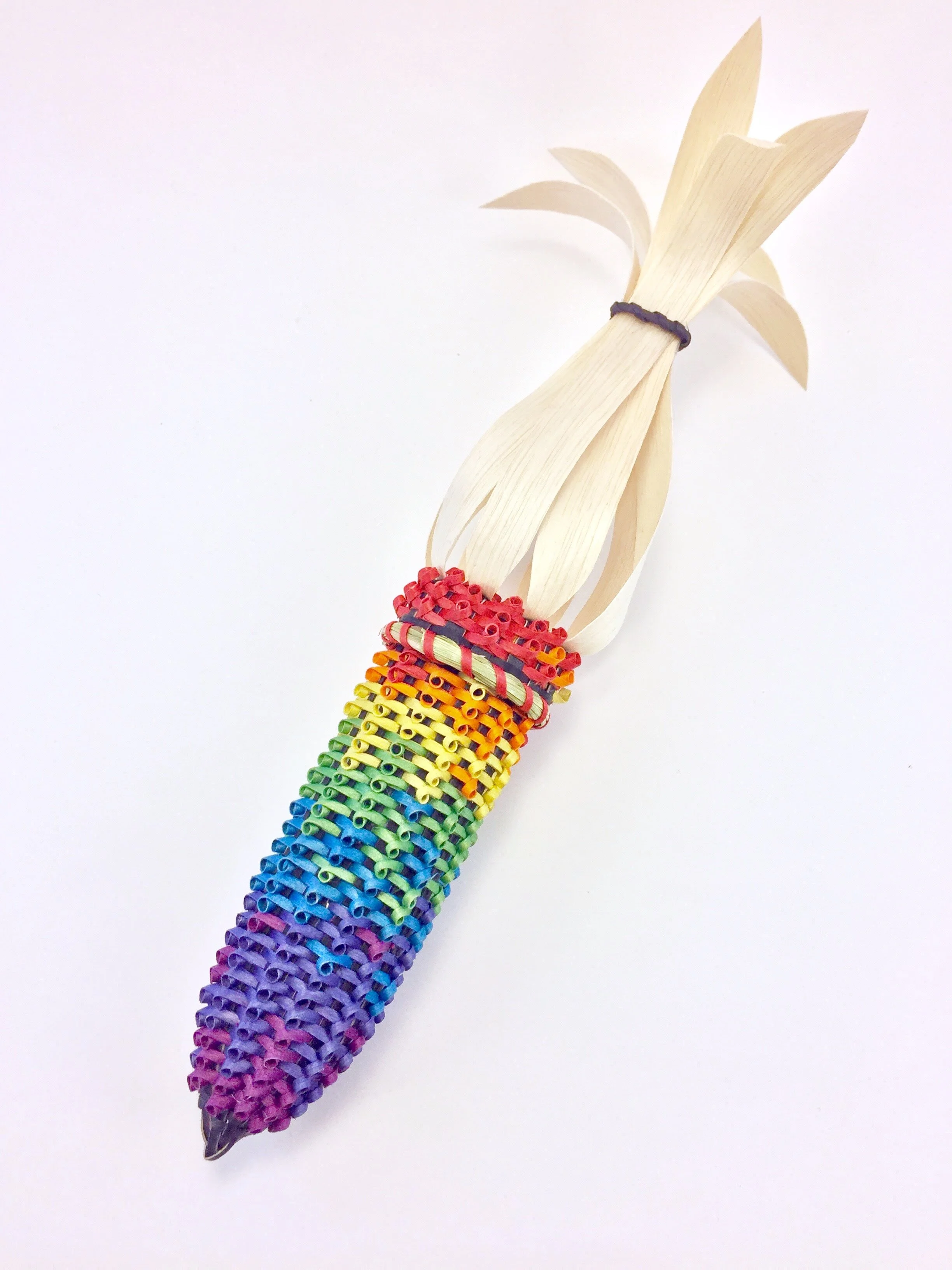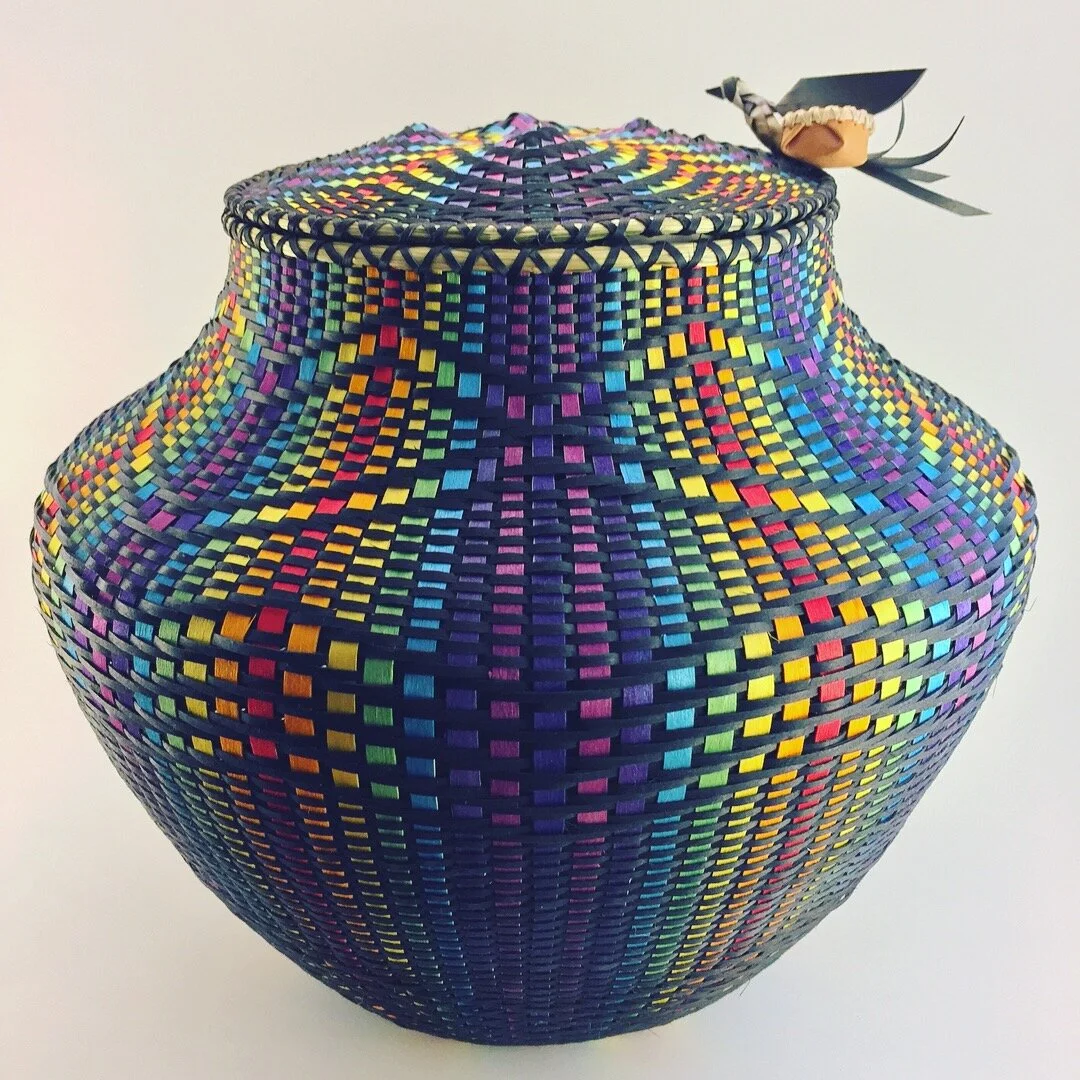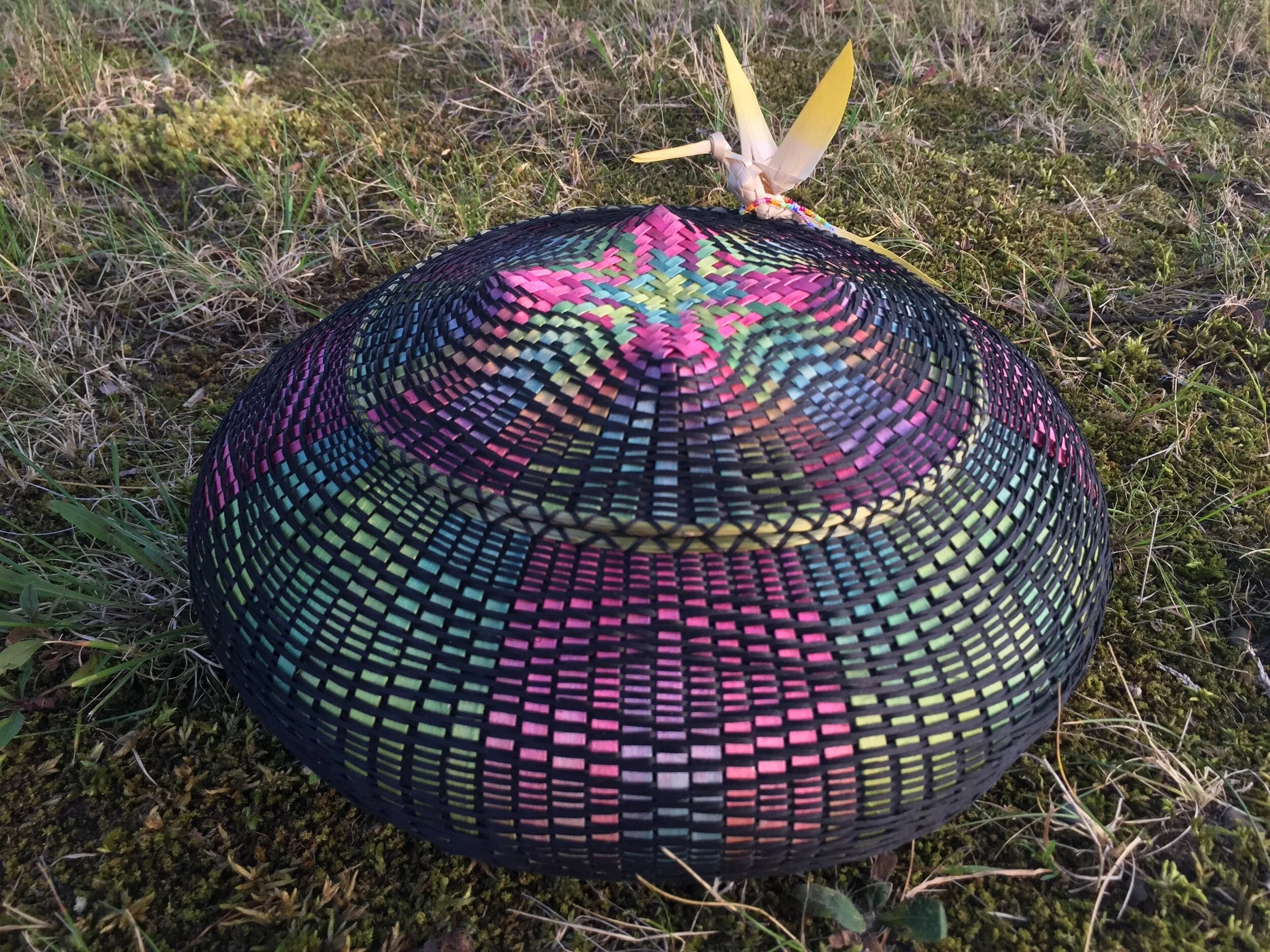TRIBAL AFFILIATION: Passamaquoddy
MEDIUM: Basketry - Ash, Clothing, Diverse-Arts
BIOGRAPHY
Geo Neptune is a member of the Passamaquoddy Tribe from Indian Township, Maine, and is a Master Basketmaker, a Drag Queen, an Activist and an Educator. As a person who identifies as a two-spirit, an indigenous cultural gender role that is a sacred blend of both male and female, Geo uses they/them gender-neutral pronouns.
At four years old, Geo had already been asking their grandmother Molly Neptune Parker to teach them how to weave baskets; after being told to wait until they were older, Geo found another elder that would teach them, and presented their grandmother with their first completed basket. Later that year, after turning five years old, Geo wove their first basket with their grandmother, beginning a lifelong apprenticeship.
After graduating from eighth grade at the Indian Township School, Geo attended Gould Academy in Bethel, Maine, where they were able to explore more artistic outlets before becoming a member of the Dartmouth College Class of 2010. Proficient in Spanish and a performing arts major, Geo studied abroad in both Barcelona and London during their time at Dartmouth.
When Geo graduated from Dartmouth College and returned to the Indian Township reservation, they began to focus heavily on their weaving, and developing their own individual artistic style. Experimenting with their family's signature woven flowers mixed with natural elements of twigs and branches, Geo began forming what would eventually be known as their signature sculptural style of whimsical, elegant, traditionally-informed basketmaking. During their time at home, Geo was also the Cultural Activities Coordinator and Drama Instructor for the Indian Township After School and Summer Programs, and eventually went on to serve as the Unit Director for the Passamaquoddy Boys and Girls Club. In 2012, Geo attended the Santa Fe Indian Market for the first time, accepted the position of Museum Educator at the Abbe Museum, and watched their grandmother receive the National Endowment for the Arts National Heritage Fellowship before moving to Bar Harbor.
Living in Bar Harbor, Geo maintained a life as a basketmaker, actor, drag queen, and activist in addition to serving as the Museum Educator. Participating in Idle No More protests here in Maine, Geo was invited as the first Indigenous youth delegate to the World Summit of Nobel Peace Laureates in Capetown, South Africa in 2014. After attending the Summit again in 2015, returning to Barcelona, Geo was then invited to attend a PeaceJam conference in Winchester, England, where they met Rigoberta Menchu Tum, the first and only Indigenous woman to win the Nobel Peace Prize. In 2016, Geo was the first drag queen on the cover of Native Peoples Magazine, with their story featured in the magazine's first official LGBTQ Pride issue. In late 2016, Geo decided to pursue their art and activism full time, and they now live back in their community at Indian Township. At home, they are able to spend more time with their apprentice and youngest sister Emma--who, at thirteen years old, has won numerous more awards for her basketry than Geo has--and with their grandmother, keeping the family and cultural tradition of basketry alive. Geo hopes to be able to work to embrace the sacred role of the two-spirit, truly becoming a keeper of tradition and a teacher and role model for Passamaquoddy and other Wabanaki youth. Most importantly, Geo hopes to inspire other two-spirits from across turtle island to accept their truth and embrace their sacred responsibility, and travels across the state and country educating learners of all ages about Wabanaki history and culture, the art of basketmaking, and what it means to them to be a Two-Spirit.


